Updated on July 26, 2024 by Angelika
UNESCO World Heritage Sites are places of outstanding universal value, whether for their cultural significance or their unique natural setting. The UNESCO World Heritage List was opened in 1978 with 12 sites. At that time the Aachen Cathedral was the only German World Heritage Site. There are now 52! They range from the medieval old town of Bamberg about the spectacular fossil site of the prehistoric horse, the Messel Pit, to the Jewish medieval heritage in Erfurt inscribed on the World Heritage List in 2023..
Among the best known World Heritage Sites in Germany are the Cologne Cathedral and the Sanssouci Palace in Potsdam. But there is so much more to discover! For example the Regensburg old town with its narrow streets and historic buildings or the Wartburg in Eisenachwhere Martin Luther once translated the New Testament incognito. Or how about the Wadden Sea: , a unique ecosystem on the North Sea coast that attracts millions of migratory birds (and tourists) every year?
Germany offers not only a rich history and culture, but also breathtaking landscapes. The 52 World Heritage Sites reflect this diversity and offer fascinating opportunities to discover the country's history, culture and nature.
So grab a cup of coffee or a cold beer and let's go on an exciting journey through Germany's UNESCO World Heritage Sites together!
Note on "multi federal states" UNESCO World Heritage Sites
Some World Heritage Sites include sites in several federal states, such as No. 1 "Major Spa Towns of Europe". Here, in Germany, the spa towns of Baden-Baden (Baden-Württemberg), Bad Ems (Rhineland-Palatinate) and Bad Kissingen (Bavaria) are UNESCO World Heritage Sites. Under each federal state concerned, I have marked the city that belongs to the transnational World Heritage Site with an asterix*. The general explanation of the UNESCO World Heritage Site is under the first place belonging to this world heritage (in this example Baden-Baden). For the other places that belong to this World Heritage Site (in this case Bad Ems and Bad Kissingen), I do not repeat the general description, but only go into the characteristics of the respective place.
Baden-Württemberg
All UNESCO World Heritage Sites in Baden-Württemberg at a glance
1. important spa towns in Europe* - Baden-Baden
2. borders of the Roman Empire - Upper Germanic-Raetian Limes*.
3. Caves and Ice Age Art of the Swabian Alb
- Hohle Fels cave (Achtal)
- Geißenklösterle cave (Achtal)
- Sirgenstein Cave (Achtal)
- Hohlenstein Cave (Lone Valley)
- Vogelherd Cave (Lone Valley)
- Bockstein Cave (Lone Valley)
4. Prehistoric Pile Dwellings around the Alps*
- Allensbach lido
- Alleshausen-Grundwiesen
- Bodman-Schachen/Löchle
- Ehrenstein
- Hornstaad-Hörnle
- Constance-Hinterhausen
- Litzelstetten-Krähenhorn
- Odenahlen
- Olzreute-Enzisholz
- Schreckensee
- Forschner estate
- Sipplingen-Osthafen
- Unteruhldingen-Stollenwiesen
- Wangen-Hinterhorn
- Wollmatingen-Langenrain
5. Monastery Complex Maulbronn
7. Le Corbusier's Work in Stuttgart
1. The Great Spa Towns of Europe* - Baden-Baden
UNESCO World Heritage since 2021
This transnational UNESCO World Heritage Site includes eleven spa towns in seven European countries, including three in Germany: Baden-Baden, Bad Ems and Bad Kissingen. In the 19th century, these towns were popular destinations for aristocrats, industrialists and artists who came here to improve their health and well-being. This phenomenon had a significant influence on the development of modern global tourism. The spa towns are characterized by architectural ensembles with magnificent spa and bath complexes, drinking halls (Trinkhallen) and galleries, casinos and spa parks, often designed by famous landscape architects.
In fashionable Baden-Baden, the entire historic city center within the boundaries of about 1920 is a World Heritage Site. The elegant atmosphere can be experienced particularly well on a walk along the famous Lichtentaler Allee, which is lined with luxury hotels, elegant villas, the Kunsthalle and the Museum Frieder Burda. It merges into Kaiserallee, where the Kurhaus, Casino and the magnificent Trinkhalle (drinking hall) with murals and Corinthian columns are located.
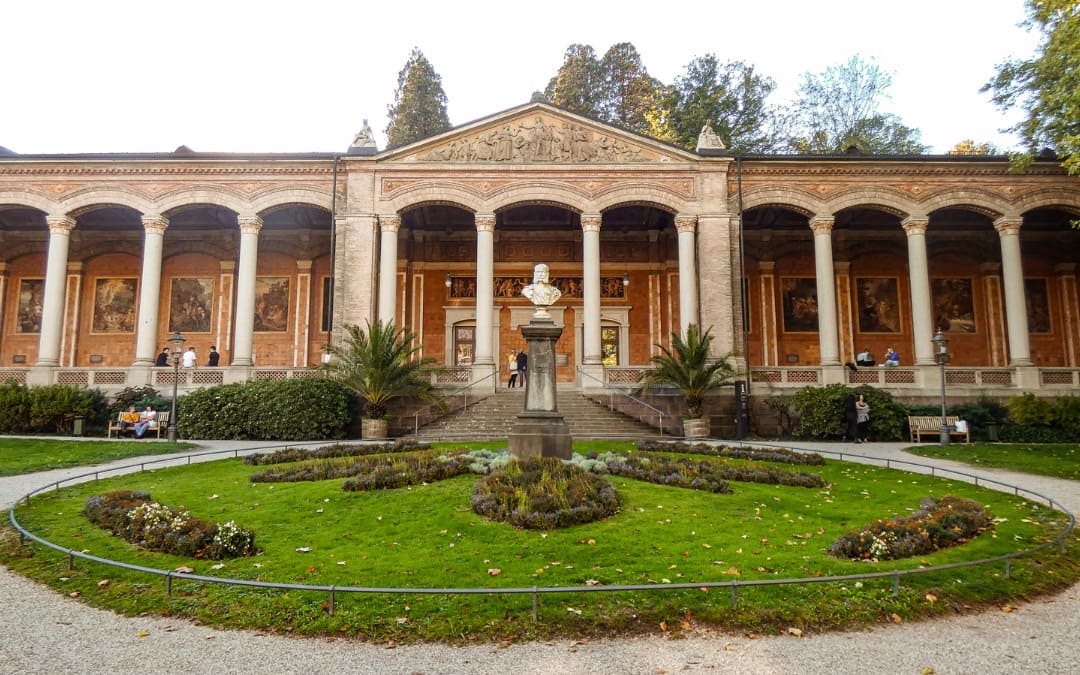
2. Frontiers of the Roman Empire - Upper Germanic-Rhaetian Limes*.
UNESCO World Heritage since 2005
The Upper Germanic-Raetian Limes is the second longest ground monument in the world (550 km) after the Great Wall of China (over 21,000 km). The Limes was built between 100 and 300 AD and runs from Bad Hönningen/Rheinbrohl on the Rhine to Fort Eining on the Danube. It thus runs through the federal states of Rhineland-Palatinate, Hesse, Baden-Württemberg and Bavaria. Together with Hadrian's Wall (recognized as a UNESCO World Heritage Site in 1987) and Antoninus Wall (recognized in 2008) in the United Kingdom, the Upper Germanic-Raetian Limes forms a transnational world heritage site.
In Aalen you can visit the largest Roman museum in southern Germany, the Limes Museum with Archaeo-Park and fort, immerse yourself in the world of the Romans and learn about this exciting world heritage.

3. Caves and Ice Age Art of the Swabian Alb
UNESCO World Heritage since 2017
The Swabian Alb is not only a natural paradise with bizarre rock formations and vast forests, but is also home to some of the most important prehistoric sites in Europe. In the valleys of the Ach and Lone rivers near Ulm, archaeologists found in six caves numerous traces of our ancestors, who lived in this region more than 40,000 years ago. In the caves are drawings, sculptures and artifacts that give us a fascinating insight into the life and work of our ancestors.
Fancy embarking on a journey into the Eocene? The caves can be visited. Some are even freely accessible.
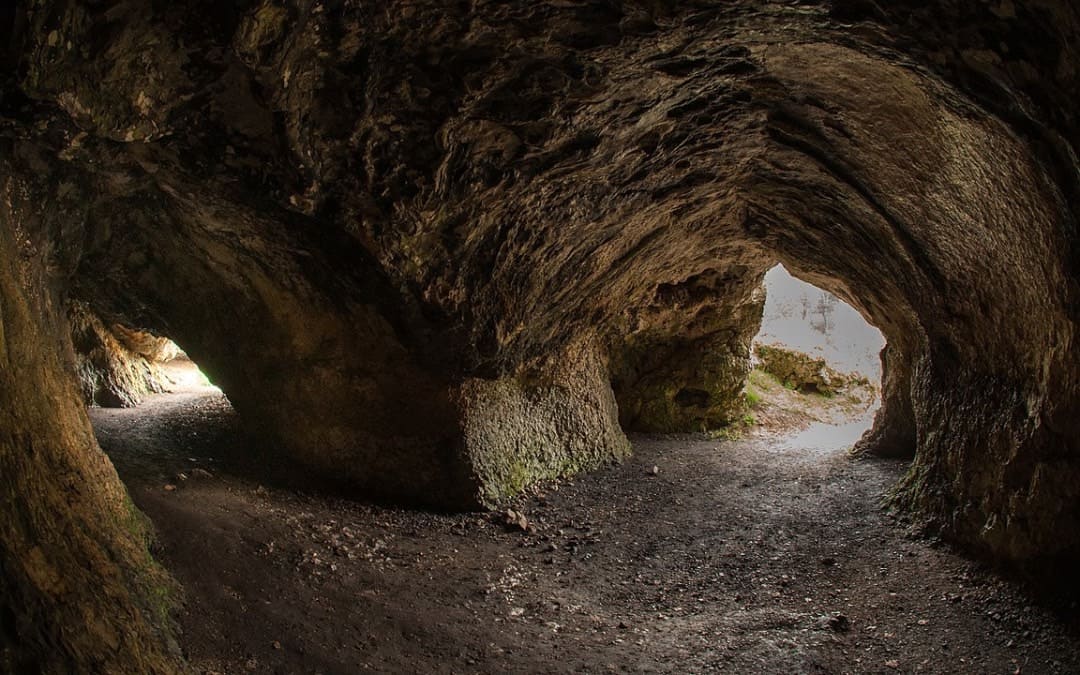
in the Swabian Alb, the site of the oldest figurative works of art known to man.
License: CC BY-SA 3.0 - Thilo Parg / Wikimedia Commons
4. Prehistoric Pile Dwellings around the Alps*
UNESCO World Heritage since 2011
These amazing remains of pile dwelling settlements are located in Austria, Germany, France, Switzerland, Slovenia and Italy, and provide information about settlement structures on lake shores over a period of approximately 4,000 years. In total, more than 100 settlements have been discovered, providing a wealth of information about life in the Neolithic and Bronze Ages based on archaeological finds. They served as places to live and work, as well as defensive structures. In Germany, for example, visitors can learn how our ancestors lived and survived in the Lake Dwelling Museum Unteruhldingen, in the Federsee Museum Bad Buchau and in the State Archaeological Museum Constance .
In Baden-Württemberg, 15 pile-dwelling sites are UNESCO World Heritage Sites, in Bavaria three.

5. Maulbronn Monastery Complex (Staatliche Schlösser und Gärten Baden-Württemberg, Kloster Maulbronn)
UNESCO World Heritage since 1993
The Maulbronn Monastery (Staatliche Schlösser und Gärten Baden-Württemberg, Kloster Maulbronn) was founded in the 12th century and is the most completely preserved medieval monastery complex north of the Alps. One highlight is the monastery church, where the early Gothic vestibule, known as the "Paradise", is particularly impressive. There you can also admire the original main portal made of fir wood with ornate wrought-iron fittings. It is the oldest datable door in Germany and the most famous pupils of the still existing monastery school, a grammar school for ancient languages, include Hermann Hesse, Friedrich Hölderlin and Johannes Kepler.
I can recommend a visit to the monastery especially in April, when an ancient magnolia unfolds its splendor in the monastery garden. When you are in Maulbronn, you should not only visit the monastery, but also take time for a walk in the idyllic surroundings with the monastery vineyards.
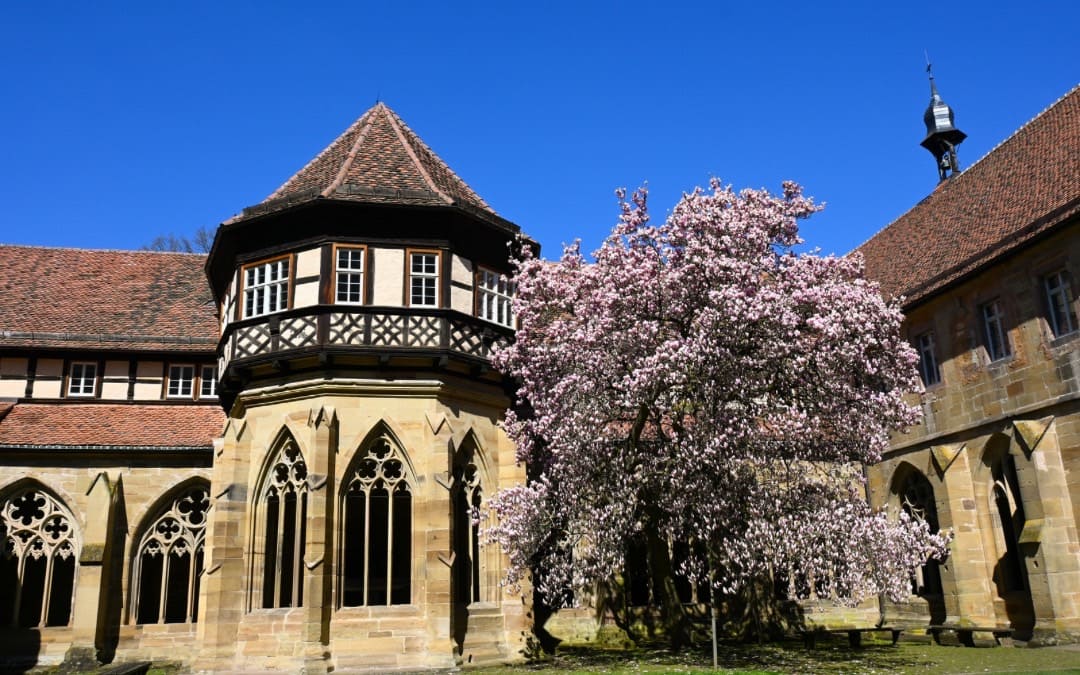
6. Monastic Island of Reichenau
UNESCO World Heritage since 2000
The Monastic Island of Reichenau in Lake Constance is a small but impressive piece of history. Here, the itinerant preacher Pirmin founded a Benedictine monastery in the 8th century, which became one of the most important cultural centers in Europe. Today you can still admire the remains of that time, including the impressive church of St. George with monumental murals from the Ottonian period. The Minster of St. Mary and St. Mark and the Collegiate Church of St. Peter and Paul are famous for their magnificent frescoes from the early Romanesque period. But not only the art and architecture of the churches are worth seeing, also the idyllic landscape of the island invites you to stay and relax.

7. Le Corbusier's Work in Stuttgart
UNESCO World Heritage since 2016
In two buildings of the Weissenhofsiedlung in Stuttgart are part of the transcontinental World Heritage Site "The Architectural Work of Le Corbusier - An Outstanding Contribution to Modernism. Le Corbusier designed the two houses in 1927 for the Werkbund housing estate, which was built under the direction of Ludwig Mies van der Rohe. Of the former 21 buildings, only 11 are still standing, including Le Corbusier's "Haus Citrohan" and his semi-detached house, which today also houses the Weissenhof Museum. The World Heritage Site, which includes a total of 17 buildings and ensembles in seven countries on three continents, honors Le Corbusier as one of the most important architects of the 20th century and shows how his ideas and designs have influenced modernist architecture and urban planning to this day.
But also otherwise Stuttgart a lot to offer. Don't miss visiting the city center around Schlossplatz and Schillerplatz . You have beautiful views of the cityfrom Eugensplatz, Weissenburg Park, Santiago de Chile Square, Burial chapel on the Württemberg, Killesberg Tower, Karlshöhe and of course from the TV Tower.
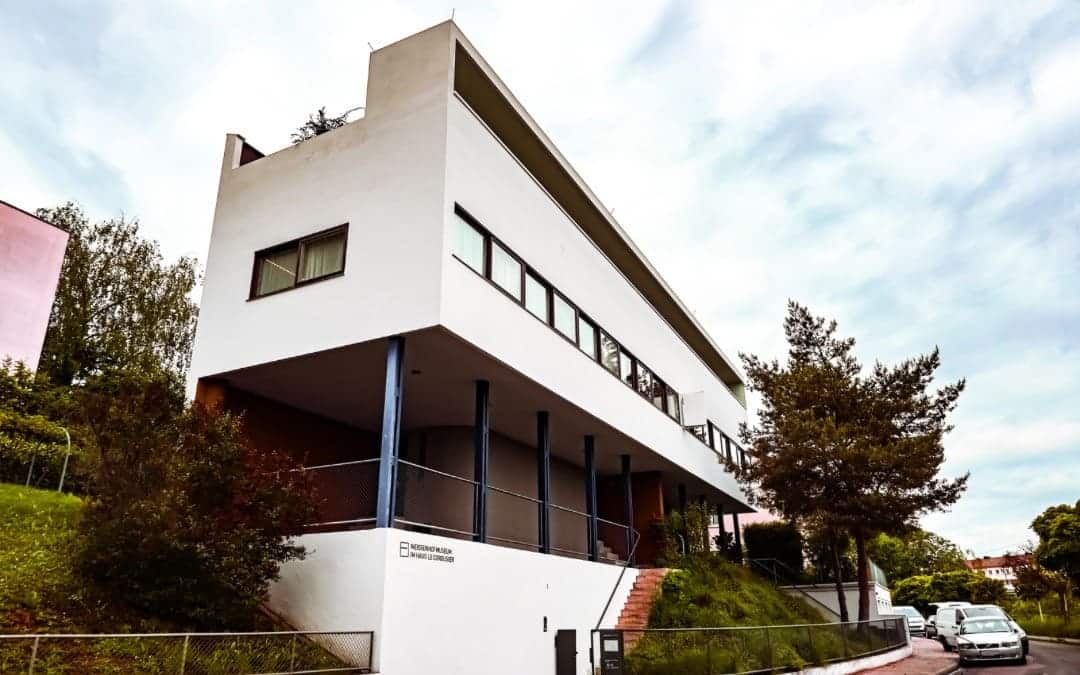
one of the most important architects of modernism.
Bavaria
All UNESCO World Heritage Sites in Bavaria at a glance
9. Old Town of Regensburg and Stadtamhof
Major spa towns in Europe* - Bad Kissingen
2. Frontiers of the Roman Empire - Upper Germanic-Rhaetian Limes*.
10. borders of the Roman Empire - Danube limes, western part*.
11. Margravial Opera House Bayreuth
12. Würzburg Residence with the Court Gardens and Residence Square
14. Water Management System of Augsburg
Prehistoric pile dwellings around the Alps*
- Pestenacker
- Rose Island
- Unfriedshausen
8. Bamberg Old Town
UNESCO World Heritage since 1993
Like Rome, Bamberg was built on seven hills. In the old town, more than 1,000 houses, largely preserved in their original condition, are protected monuments. Bamberg is an excellent example of a Central European city built on early medieval structures. It is dominated by the Cathedral of St. Peter and St. George, which is one of the German imperial cathedrals, dominates. The Old court, the baroque Residenz, the famous Bridge Town Hall and the idyllic Fishermen's Quarter on the Regnitz River are further highlights. A visit to the beer cellar is a must in Bamberg. Beer drinkers love the spicy smoked beer with a Bavarian delicacy, but alternatively the good Franconian wine is served.
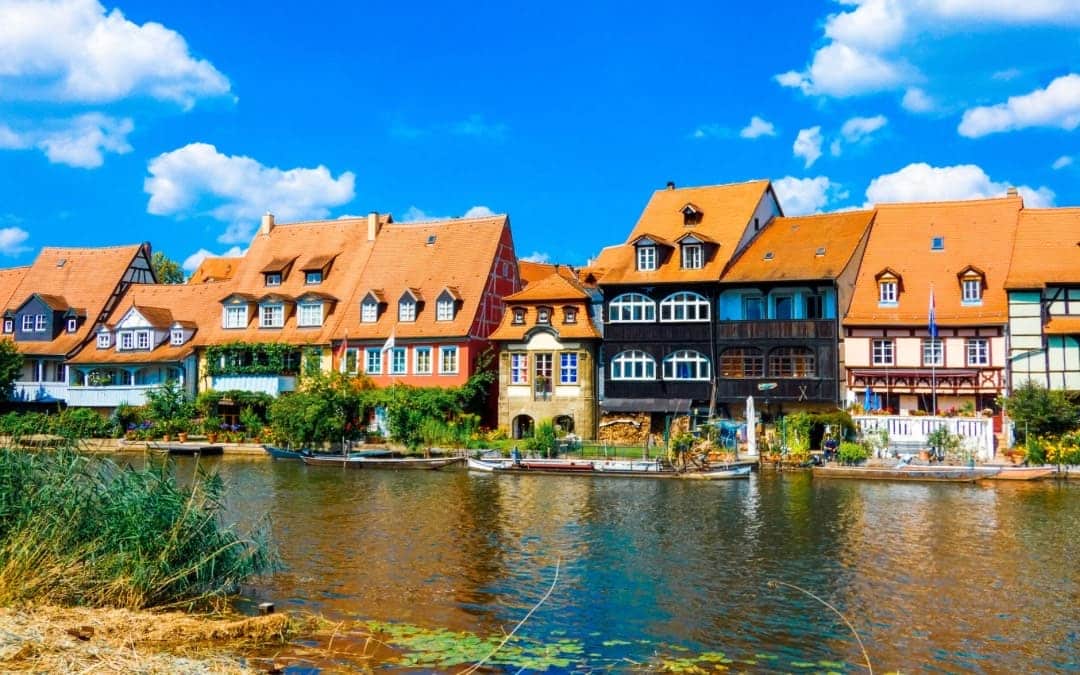
9. Old Town of Regensburg and Stadtamhof
UNESCO World Heritage since 2006
The old town of Regensburg with Stadtamhof is the best preserved major German city of the Middle Ages and impresses with its 2000-year history. Churches, towers and patrician houses from the 13th and 14th centuries characterize the cityscape. The Stone bridge, which connects the old town with the opposite district of Stadtamhof, was built as early as the 12th century and is a masterpiece of engineering. In the Gothic St. Peter's Cathedral inspire the colorful stained glass windows.
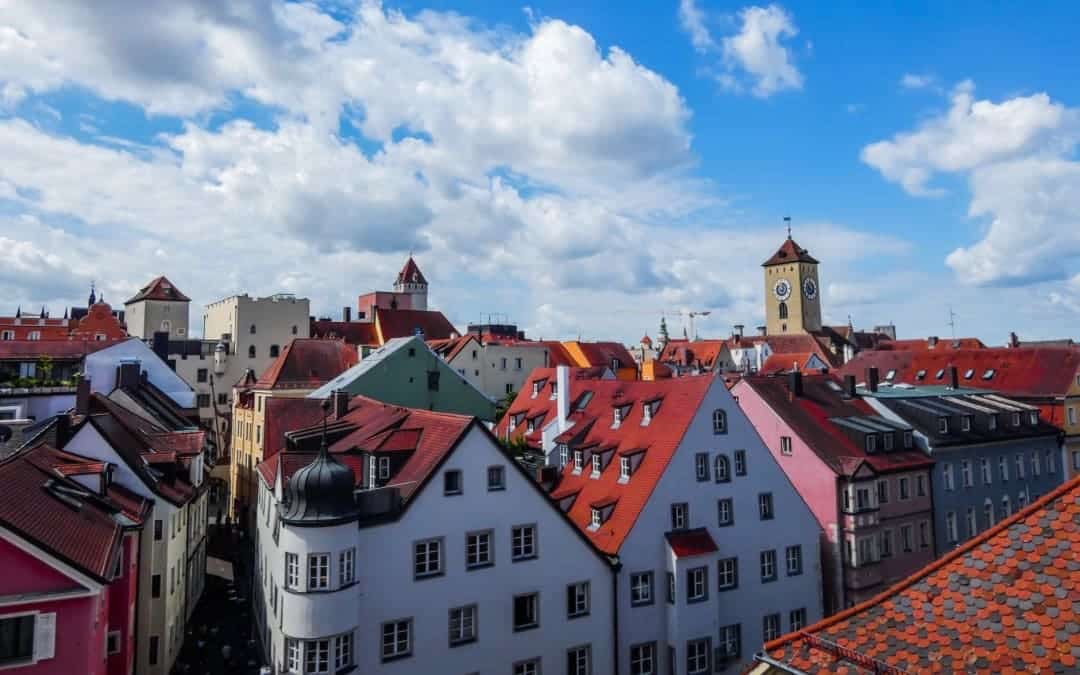
The Great Spa Towns of Europe* - Bad Kissingen
UNESCO World Heritage since 2021
Bad Kissingen is one of the three German cities belonging to the UNESCO World Heritage Site "The Great Spa Towns of Europe" belong to. It is located in the valley of the Franconian Saale on the southern edge of the Rhön and enchants visitors with its idyllic parks and classic spa architecture. Even Imperial Chancellor Otto von Bismarck found Bad Kissingen to be the perfect setting for relaxing spa stays. The Regentenbau, today's landmark of Bad Kissingen, and the Wandelhalle (the largest drinking spa hall in Europe) were built between 1911 and 1913 according to plans by the Munich architect Max Littmann due to the rapidly increasing number of spa guests at the beginning of the 20th century.

Frontiers of the Roman Empire - Upper Germanic-Rhaetian Limes*
A special place along the Upper Germanic-Raetian Limes is Weißenburg in Bavaria. Here you will find the central Limes Information Center for the Bavarian section - a must for all history buffs!
Just outside the city center of Weißenburg you can visit the impressive complex of the Biriciana Roman Fort whose northern gate, the Porta Decumena, has been reconstructed. Just a few hundred meters away - in the middle of a residential area - are the expertly restored Roman Baths, which were discovered in 1977 during construction work.
But the best comes at the end: In 1979, an amateur gardener discovered one of the most important Roman treasures ever found in Germany while planting an asparagus bed! The 114 objects found - including 17 unique bronze figures of gods - can be seen today in Weißenburg's Roman Museum admire
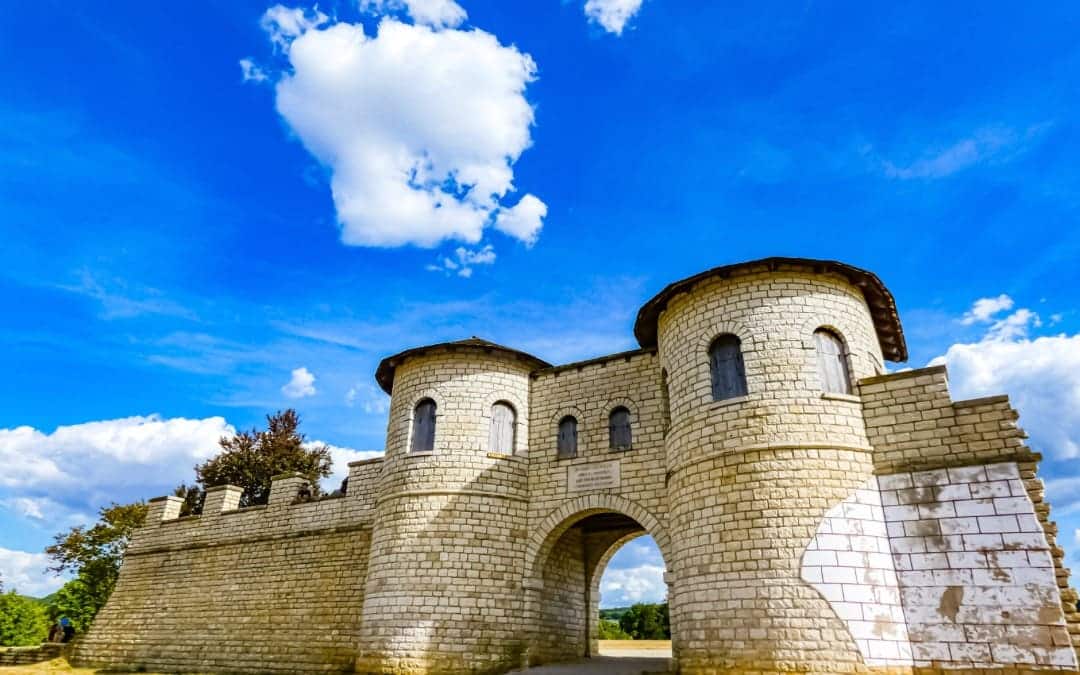
10. Frontiers of the Roman Empire - The Danube Limes (Western Segment)*
UNESCO World Heritage since 2021
A total of 77 sites between Bad Gögging in Bavaria and Iza in Slovakia make up the World Heritage Site Borders of the Roman Empire - Danube Limes. In Bavaria, the Danube Limes includes nine sites between Neustadt an der Donau and Passau. An impressive section of it is located, for example, in Regensburg: the Porta Praetoria formed the northern gate of the legionary camp "Castra Regina". It is along with the Porta Nigra in Trier the best preserved Roman city gate north of the Alps. In 1650 it was integrated into the bishop's court, walled up and forgotten. It was only rediscovered in 1885 during demolition work.
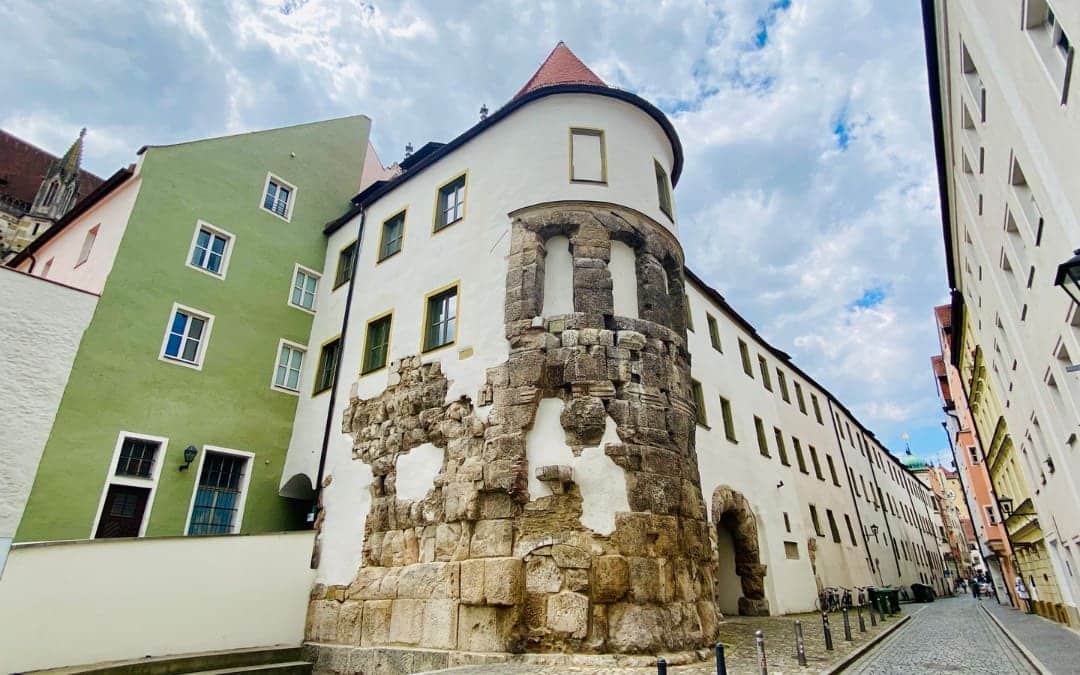
11. Margravial Opera House Bayreuth
UNESCO World Heritage since 2012
The Margravial Opera House in Bayreuth was built between 1744 and 1748 by Giuseppe Galli da Bibiena and his son Carlo (the most famous theater architects of their time) was built and is considered the most beautiful preserved baroque theater in Europe. It bears witness to the artistic and cultural importance of the Margraviate of Bayreuth in the 18th century and impresses with its richly decorated facade, its imposing stage set and its excellent acoustics. The carved and painted interiors of the log theater, made entirely of wood, are unique in the world. Richard Wagner came to Bayreuth in 1871 hoping to find in the opera house - which at the time had the largest stage of any German theater - a suitable venue for his Ring of the Nibelung to find. However, the auditorium was too small for him and he decided to have his own theater built in Bayreuth.

- © manfredxy via canva.com
12. Würzburg Residence with the Court Gardens and Residence Square
UNESCO World Heritage since 1981
The Würzburg Residence is considered to be the stylistically pure epitome of a European baroque palace. It was built in the first half of the 18th century by order of the prince-bishops of Würzburg and impresses with its magnificent interior. The Würzburg court architect Balthasar Neumann led the international team of renowned artists and architects from all over Europe who collaborated on this gigantic project. The cantilevered staircase by Balthasar Neumann and the ceiling frescoes by Giovanni Battista Tiepolo are the highlights of the residence. The baroque court garden was laid out between 1765 and 1780 and completes the magnificent work of art.
Not only the Residence, but also many other sights and the wonderful location on the Main River, surrounded by vineyards, make Würzburg one of the most worth seeing cities in Germany. Read also my detailed article about Würzburg and its main attractions.
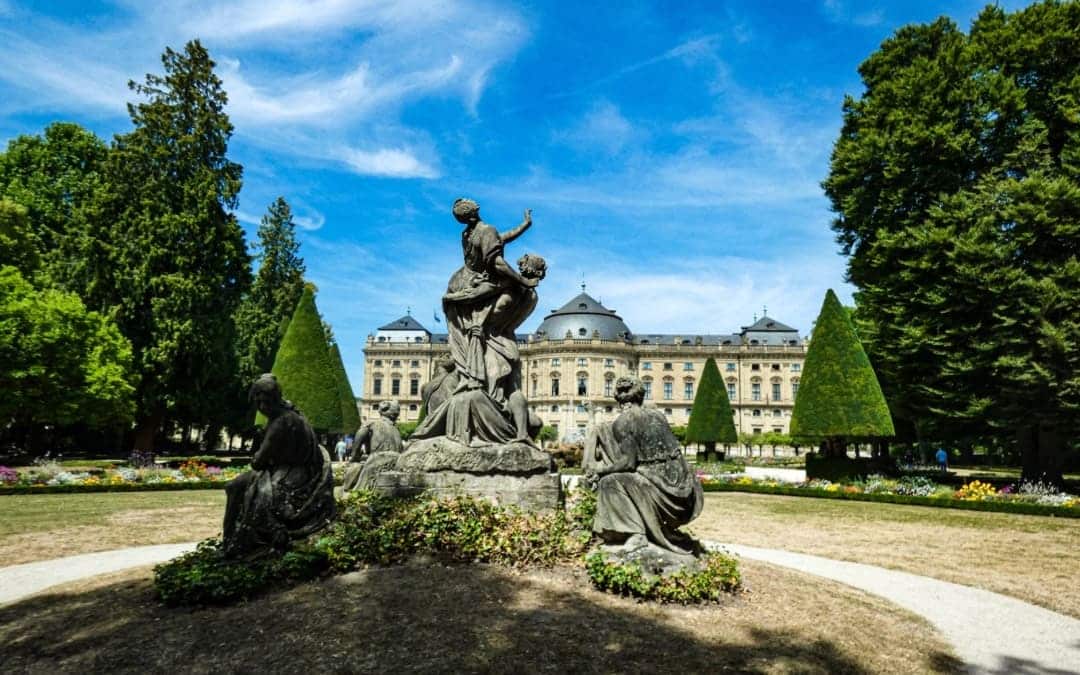
(with kind permission of the Bavarian Palace Department)
13. Pilgrimage Church of Wies
UNESCO World Heritage since 1984
The pilgrimage church "Zum Gegeißelten Heiland auf der Wies" - in general called "Wieskirche" is a masterpiece of the Rococo style and one of the most beautiful churches in Germany. The richly decorated facade and the magnificent interior with opulent stucco work by Dominikus Zimmermann and the elaborate frescoes by his brother Johann Baptist Zimmermann, court painter to the Bavarian Elector, make the church, built in the 18th century, a symbol of the artistic wealth of the Bavarian Rococo.
With a number of magnificent cultural monuments and breathtaking scenery, the Bavarian Alpine region is one of the most attractive areas in Germany.
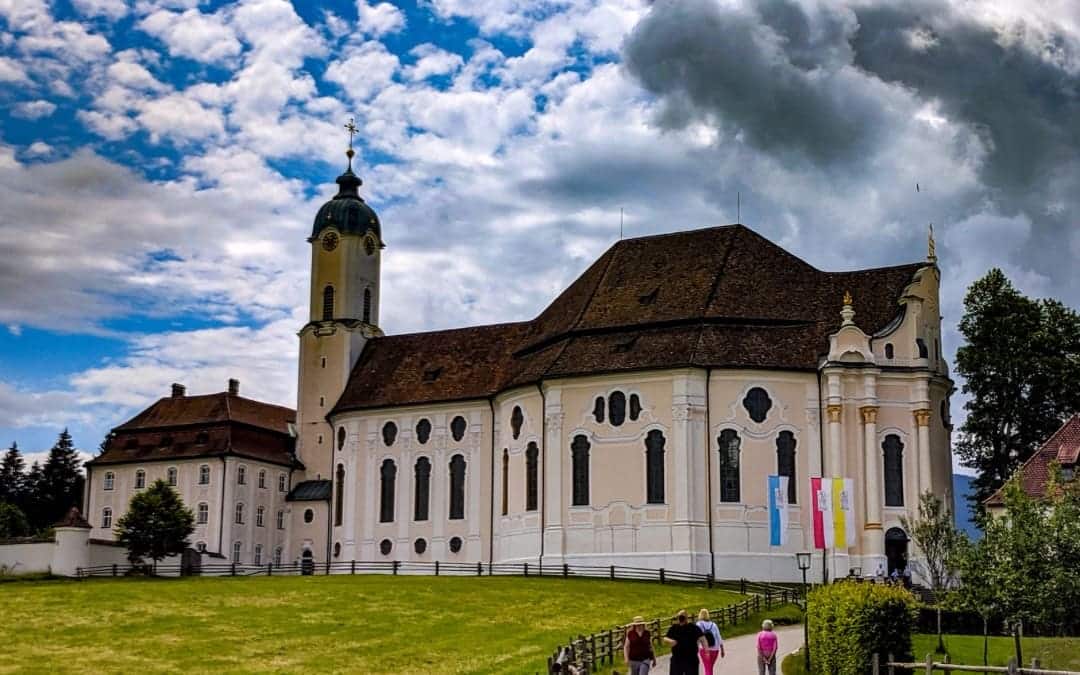
14. Water Management System of Augsburg
UNESCO World Heritage since 2019
The Augsburg Water Management System is a historical system of canals, bridges, weirs and water towers that ensured the water supply of the city of Augsburg since the 14th century. As early as 1545, Augsburg strictly separated drinking and process water, because at that time contaminated drinking water was the cause of many diseases (which is still the case in many countries around the world today). Augsburg's water management system shows how human innovation and technology can help improve the environment and society in the long term.
By the way, Augsburg has more bridges than Venice! 530 small and large bridges lead over the streams and canals of the city.

Prehistoric pile dwellings around the Alps*
The description of this UNESCO World Heritage Site can be found the Cathedral's website.
In Bavaria, three pile-dwelling sites (Pestenacker, Unfriedshausen and Roseninsel) are UNESCO World Heritage Sites, and 15 in Baden-Württemberg.
Berlin
All UNESCO World Heritage Sites in Berlin at a glance
16. Palaces and Parks of Potsdam and Berlin*
17. Berlin Modernism Housing Estates
- Hufeisensiedlung (Neukölln)
- Garden City Falkenberg (Treptow-Köpenick)
- Schillerpark housing estate (Wedding)
- Carl Legien housing estate (Prenzlauer Berg/Pankow)
- White City (Reinickendorf)
- Siemensstadt (Spandau)
15. Museum Island
UNESCO World Heritage since 1999
The Museum Island in Berlin is a unique complex of buildings that houses treasures from 6,000 years of history in five temple-like museums (Altes Museum, Neues Museum, Alte Nationalgalerie, Bode Museum and Pergamon Museum). The buildings were constructed over a period of 100 years and impress both with their architecture and their rich cultural heritage, which includes ancient sculptures, paintings, handicrafts and much more.
- The Old Museum is the oldest museum building in Germany and probably the most important work of Karl Friedrich Schinkel. For decades it stood as a war ruin in the middle of the city, until in 2003 restoration begann under the direction of British architect David Chipperfield .
- At the New Museum you can see the world famous bust of the Nefertiti, the manuscript of Homer's "Iliad" and marvel at the important papyrus collection.
- The Old National Gallery presents an outstanding collection of German and European art of the 19th century, with paintings of the Romantic period, e.g. by Caspar David Friedrich, as well as an extensive Impressionist collection with works by Claude Monet, Édouard Manet, Auguste Renoir, Edgar Degas, Paul Cézanne and sculptures by Auguste Rodin.
- The Bode Museum houses the Sculpture collection, the Museum of Byzantine art and the Coin Cabinet.
- At the Pergamon Museum is home to one of the most impressive collections of ancient art in the world. Among the highlights are the Pergamon Altar, the Ishtar Gate from Babylon, the Miletus market hall and the collection of Islamic art. Parts of the museum have been under renovation for years, and it will close completely for four years starting in October 2023.
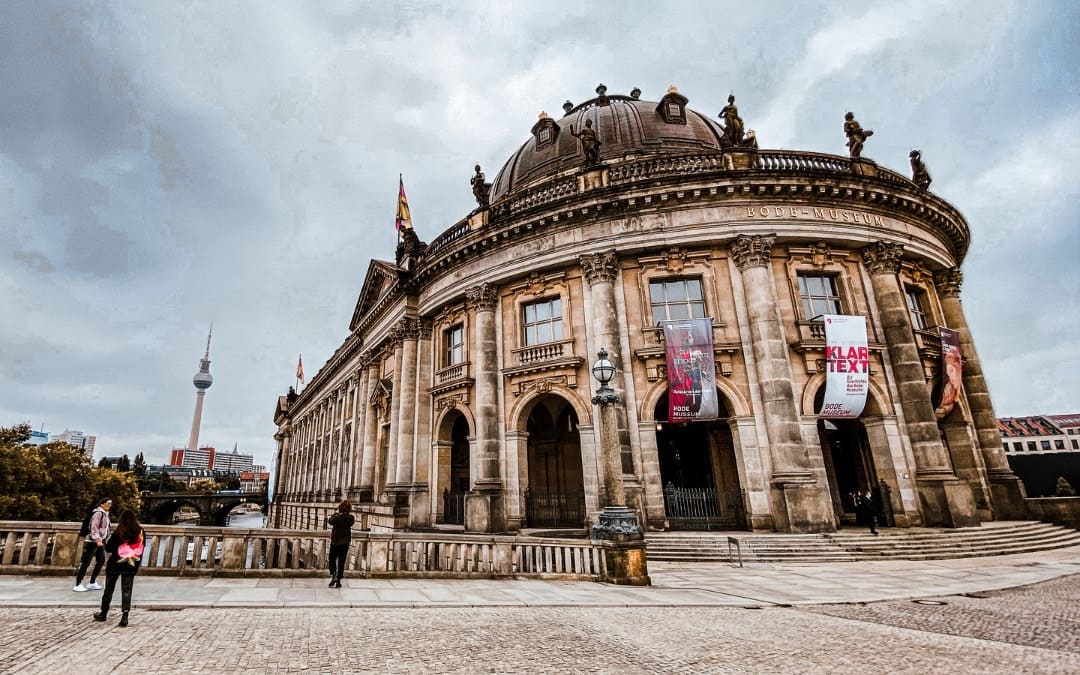
Recommended accommodation in Berlin
16. Palaces and Parks of Potsdam and Berlin*
UNESCO World Heritage since 1990
The Berlin Potsdam Park Landscape forms one of the largest and most beautiful cultural landscapes in Europe. During the division of Germany, this Gesamtkunstwerk was cut in two by border fortifications and barbed wire. Just two months after reunification, on December 12, 1990, UNESCO inscribed the palaces and parks of Potsdam and Berlin on the World Heritage List. The Prussian Palaces and Gardens Foundation Berlin-Brandenburg quickly began to restore the destroyed grounds. The World Heritage Site includes Sanssouci Palace (the "Prussian Versailles") in Potsdam, the Russian colony Alexandrowka, the observatory in Babelsberg, Cecilienhof Palace and Babelsberg Palace, and the Havellandschaft with the palace and garden complexes in Glienicke and the Pfaueninsel (Peacock Island) in Berlin.
The architecture and landscape design are an impressive example of the art of the Baroque and Rococo periods. Great architects, artists and garden architects were involved in the design of the cultural landscape: Knobelsdorff, Schinkel, Lenné, Stüler ..., to name only a few.

17. Berlin Modernism Housing Estates
UNESCO World Heritage since 2008
The Berlin Modernism Housing Estates were built between 1913 and 1934 by progressive architects (Bruno Taut, Hans Scharoun, Walter Gropius, Otto Rudolf Salvisberg and Hugo Häring) and urban planners (especially Martin Wagner) to provide affordable and healthy housing for the working class. They are unique examples of the architectural and urban planning movements of early modernism. Six of these settlements were recognized by UNESCO as World Heritage Sites in 2008 - the famous Britzer Hufeisensiedlung in the district of Neukölln, the Gartenstadt Falkenberg in Treptow-Köpenick, the Siedlung Schillerpark (Wedding), the Wohnstadt Carl Legien (Prenzlauer Berg/Pankow), the Weiße Stadt (Reinickendorf) and the Siemensstadt (Spandau). The settlements represent the effort to improve the quality of life for city residents in a time of housing shortage (during the Weimar Republic).
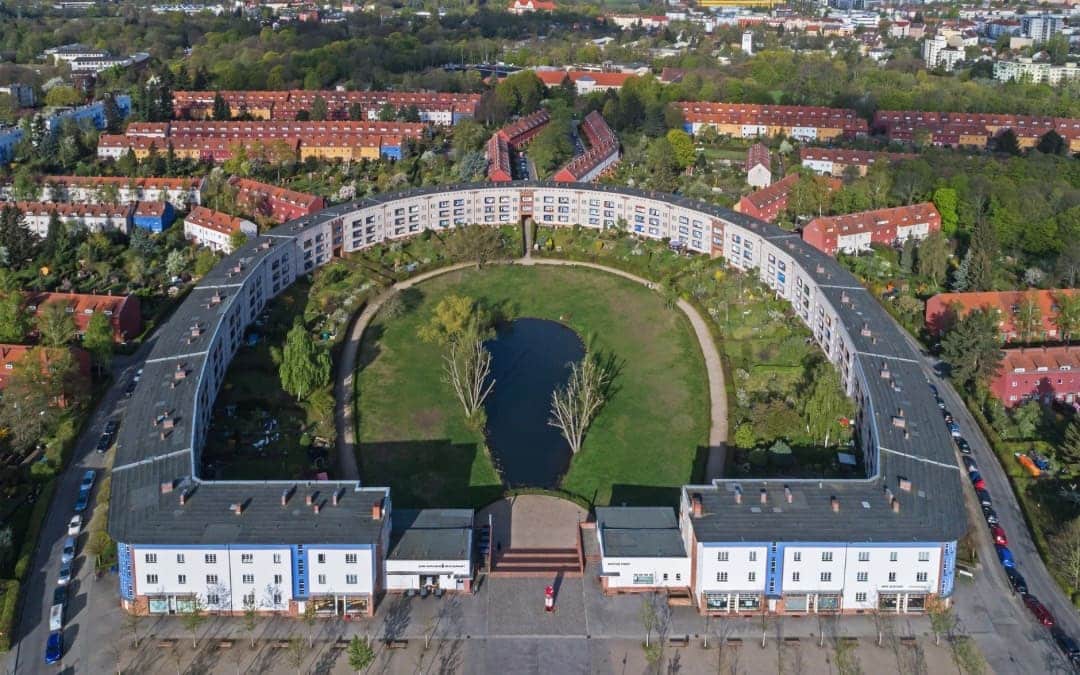
in social housing in Berlin - © A.Savin - WikiCommons
Brandenburg
All UNESCO World Heritage Sites in Brandenburg at a glance
18. Bauhaus and its Sites in Weimar, Dessau and Bernau*.
- ADGB School Bernau
Palaces and Parks of Potsdam and Berlin*
- Sanssouci Palace and Gardens
- Russian colony Alexandrovka
- Babelsberg Palace
- Babelsberg Observatory
- Cäcilienhof Castle
19. Ancient and Primeval Beech Forests of the Carpathians and Other Regions of Europe*
- Grumsin Forest
Besides the historical ambience, Regensburg offers the highest density of pubs in Germany. Read also why Regensburg for me the most beautiful city in Germany .
18. Bauhaus and its Sites in Weimar, Dessau and Bernau*
UNESCO World Heritage since 1996
The Bauhaus an art and design school founded by Walter Gropius in Weimar in 1919, had a great influence on modern architecture and design worldwide. Important Bauhaus artists were, among others Wassily Kandinsky, Paul Klee, Lyonel Feininger, Oskar Schlemmer, László Moholy-Nagy and Gerhard Marcks. In 1925, the Bauhaus moved from Weimar to Dessau because the right-wing conservative parties in Thuringia wanted to close it down. When the NSDAP won the municipal election in Dessau in 1931, the Bauhaus was closed and moved to Bernau near Berlin, but had to dissolve itself in 1933 due to Nazi repression.
The ADGB Trade Union School in Bernau near Berlin, designed by Hannes Meyer und Hans Wittwer in 1928 was added to the UNESCO World Heritage Site in 2017 together with the Houses with Balcony Access in Dessau. Hannes Meyer had taken over the directorship of the Bauhaus in Dessau from Walter Gropius in 1928. He planned the construction of the ADGB-school together with Wittwer and Bauhaus students from almost all workshops. Today, the main building is used by the Berlin Chamber of Crafts, and the renovated teachers' houses are rented out. Therefore, the buildings can only be visited as part of guided tours. Information on guided tours and opening hours is available at the visitor center opened in 2022.

Palaces and Parks of Potsdam and Berlin**
You can find the description of this interstate world heritage under Berlin.
The World Heritage Site in Potsdam includes Sanssouci Palace (the "Prussian Versailles"), the Russian colony of Alexandrowka, the observatory in Babelsberg, Cecilienhof Palace and Babelsberg Palace.

19. Ancient and Primeval Beech Forests of the Carpathians and Other Regions of Europe*
UNESCO World Heritage since 2011
The appearance of Europe is characterized by its beech forests, which covered 40% of the continent as recently as 6,500 years ago. Germany would even be two-thirds covered with beech forests without human influence. The World Heritage Site comprises a total of 78 protected areas in 12 European countries.
The five most valuable old beech forests in Germany were inscribed on the World Heritage List in 2011: the Grumsin Forest in Brandenburg, the Kellerwald-Edersee National Park in Hesse, the Jasmund National Park on Rügen and the Serrahn in the Müritz National Park in Mecklenburg-Western Pomerania and the Hainich National Park in Thuringia. These forests are among the oldest and most species-rich beech forests in Europe and are home to many endangered animal and plant species.
In Brandenburg is the Grumsin Forest Part of the UNESCO World Heritage Site: the Grumsin beech forest is one of the largest contiguous lowland beech forests in the world. The GDR Politburo liked to go hunting here - an advantage for nature, where swamps and moors were preserved as retreats for game. You can explore the beech forest on four circular hiking trails and on guided tours .

Bremen
UNESCO World Heritage Town Hall and Roland in Bremen at a glance
20. Town Hall and Roland in Bremen
UNESCO World Heritage since 2004
The oldest and most magnificent buildings of the Hanseatic city Bremen are grouped around the market square. The imposing town hall is one of the most beautiful in all of Germany and an outstanding example of the North German Weser Renaissance. It was built at the beginning of the 15th century right next to the cathedral and in the same size - a symbol of the city's independence from the ecclesiastical sovereign. Germany's oldest wine cellar is located in the historic Ratskeller. Here Heinrich Heine, and Wilhelm Hauff already sought truth and inspiration in wine.
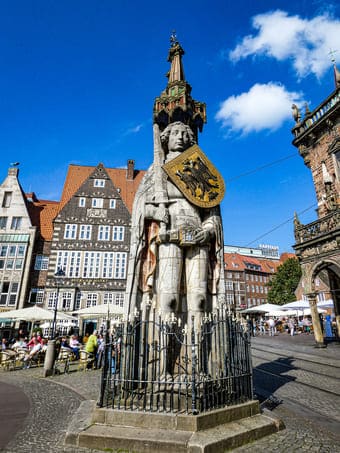
Roland, over 10 meters high with a canopy, is the largest free-standing statue of the Middle Ages. Both buildings - City Hall and Roland - symbolize the political idea of civic autonomy and Hanseatic freedom.
From the marketplace you enter through the gate under the golden Lightbringer directly into Böttcherstraße, which, although not a World Heritage Site, is a rare and impressive example of the architecture of the Expressionism .
Hamburg
All of Hamburg's UNESCO World Heritage Sites at a glance
21. Speicherstadt and Kontorhaus District with Chilehaus
21. Speicherstadt and Kontorhaus District with Chilehaus
UNESCO World Heritage since 2015
The Speicherstadt in Hamburg is a unique ensemble of red brick buildings built between 1883 and 1927. These buildings once served as warehouses for the trade of coffee, cocoa, tea and spices. The Kontorhaus quarter was built in the 1920s and 1930s and is characterized by its modernist architecture. A special highlight of the quarter is the Chilehaus, an expressionist office building from 1924, which impresses with its unusual shape, reminiscent of a ship.
In addition to the largest oriental carpet warehouse in the world, today the Speicherstadt is home to many cafés, restaurants and museums - the Miniaturwunderland is particularly popular.
Many creative people also have their studios and shops in the former warehouses.
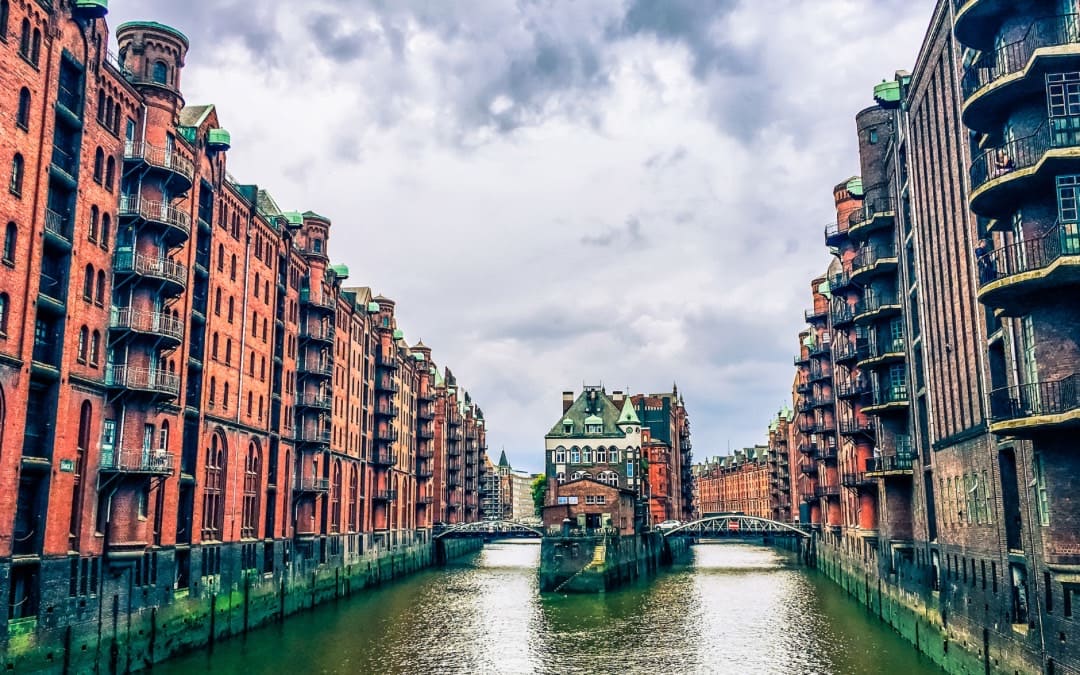
22. The Wadden Sea*
The Wadden Sea: on the North Sea coast stretches from the Dutch coast to the Danish border. It is a complex ecosystem of tidal creeks, mudflats, salt marshes and dunes that provides a habitat for more than 10,000 animal and plant species. For many migratory birds it is a stopover and resting area. The Wadden Sea is a transnational World Heritage Site (with Denmark and the Netherlands) and includes three national parks in Germany in Schleswig-Holstein, Lower Saxony and Hamburg.
Tip: Experience the Wadden Sea on mudflat walks with an experienced guide and bird watching!
Hesse
All UNESCO World Heritage Sites in Hesse at a glance
2. Frontiers of the Roman Empire - Upper Germanic-Rhaetian Limes*.
Ancient and Primeval Beech Forests of the Carpathians and Other Regions of Europe*
23. Darmstadt Artists' Colony on Mathildenhöhe
Frontiers of the Roman Empire - Upper Germanic-Rhaetian Limes*
In Hesse you can experience the Upper Germanic-Raetian Limes especially at the rebuilt Saalburg Roman Fort near Bad Homburg. On the "Saalburg circular route"which leads around Saalburg Castle, you can discover hidden archaeological monuments and vivid reconstructions of Roman dwellings, temples and sanctuaries on a stretch of 2.4 km.

Ancient and Primeval Beech Forests of the Carpathians and Other Regions of Europe*
The Hessian share of this World Heritage is located in the National Park Kellerwald-Edersee.
In the low mountain range landscape of the Kellerwald, there are beech trees that are more than 160 years old. Here, the hunting passion of the princes of Waldeck and Pyrmont and the steep and rocky terrain prevented forestry use.

23. Darmstadt Artists' Colony on Mathildenhöhe
UNESCO World Heritage since 2021
The Artists' Colony on the Mathildenhöhe in Darmstadt was a major center of early 20th century reform architecture in Europe and around the world from 1901 to 1914. Ernst Ludwig, the visionary Grand Duke of Hesse, brought to Darmstadt young architects and artists who wanted to break away from traditional forms and materials and create something new and innovative, among them the Viennese architect Joseph Maria Olbrich and the designer Peter Behrens - teacher of Le Corbusier and the later Bauhaus-directors Gropius and Mies van der Rohe. The Mathildenhöhe artists' group pioneered a modern architecture that distanced itself from historicizing styles and focused on functional and aesthetic aspects. The movement was a pioneer of the Bauhaus..

24. Messel Pit Fossil Site
UNESCO World Heritage since 1995
The Messel Pit Fossil Site near Darmstadt was the first German World Natural Heritage Site. Fossils, including mammals, birds, reptiles, and insects, up to 56 million years old (Eocene) were discovered in the oil shale of the pit during mining operations. The first find in 1876 was an alligator skeleton. The finds from the Messel Pit are of inestimable scientific value. Due to their quantity and good state of preservation, the fossils contributed a lot to our current understanding of evolution and the history of life on earth .
The Messel mine is an active mining operation, which is why only guided tours are possible. Between April and October daily taster tours, at the weekend also Pit walks offered. Only registered guests can take part in a guided tour. From a viewing platform you can take a look into the mine, even if you do not take part in a guided tour.
25. Wilhelmshöhe Park
UNESCO World Heritage since 2013
The Wilhelmshöhe Park in Kassel is a unique baroque garden, which was laid out in the style of an English landscape garden from 1696 as per an idea of Landgrave Karl von Hessen-Kassel. Together with Wilhelmshöhe Palace, it combines art, technology and landscape architecture during European absolutism in an impressive synthesis. Kassel's landmark - the Hercules - towers over the monumental water theater of Steinhöfer Waterfall, Peneus Cascades and Fountain Pond.
The biggest attraction of the mountain park, the water features, can be admired from May 1 to October 3 on Wednesdays, Sundays and holidays (in Hesse), but only from 2:30 p.m.
Wilhelmshöhe Castle was severely damaged in World War II and was rebuilt as a museum until 1974. The Old Masters Art Gallery shows works by Dürer, Rembrandt, van Dyck, Rubens and Hals, and more.
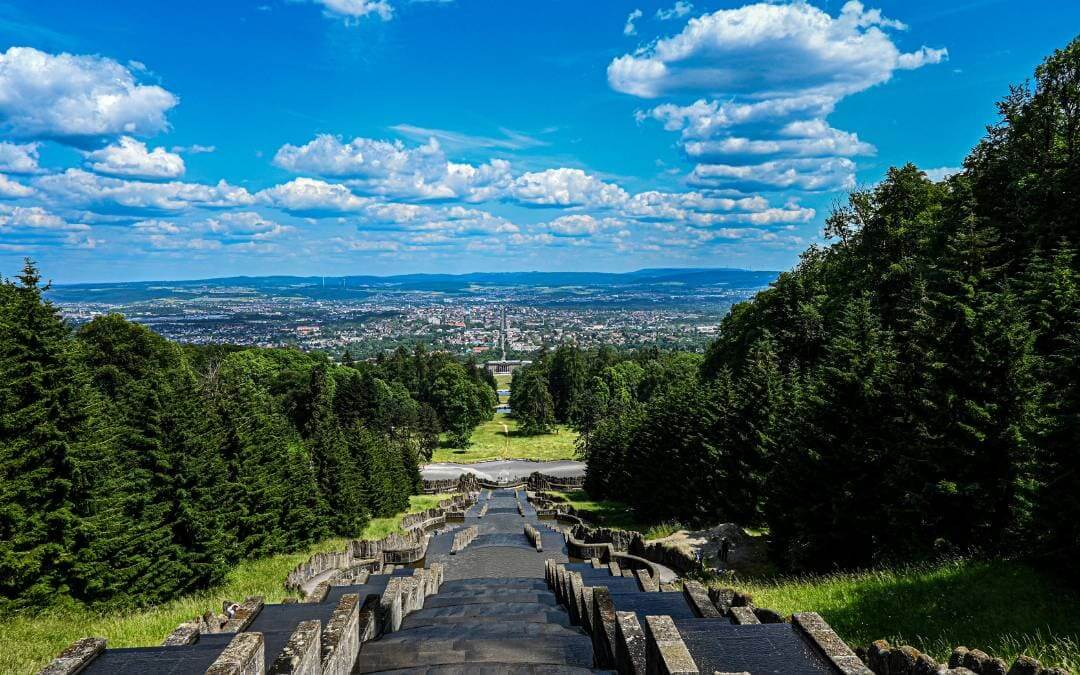
26. Lorsch Abbey
UNESCO World Heritage since 1991
The former Benedictine monastery was founded in the 8th century during King Pippin'sreign, who was the father of Charlemagne, however, about 800 m east of its current location. The monastery was a center of power and science of the Holy Roman Empire until the high Middle Ages and was home to one of the largest medieval libraries. The architectural highlight of the complex is the King's Hall (Gate Hall) from the 9th century, which with its arcades, pilasters and semi-columns is considered an outstanding example of the Carolingian Renaissance.
The premises of Lorsch Abbey are freely accessible daily until nightfall, but the Königshalle can only be visited as part of a guided tour.

27. Upper Middle Rhine Valley
UNESCO World Heritage since 2002
Hesse shares this World Heritage title with Rhineland-Palatinate. The Upper Middle Rhine Valley between Bingen and Koblenz has been a romantic destination of longing for centuries and is known for its steep slopes and vineyards crowned by castles. According to legend, a beautiful river mermaid combed her golden hair on the famous Loreley Rock and drove unwary riverboatmen to their deaths with the sight of her. The region has a long history as an important trade route and defensive position, and played a major role in shaping the Romantic movement of the 19th century.
On the territory of Hesse there are popular sights and places such as. Rüdesheim, the Abbey of St. Hildegard and the Niederwald Monument.
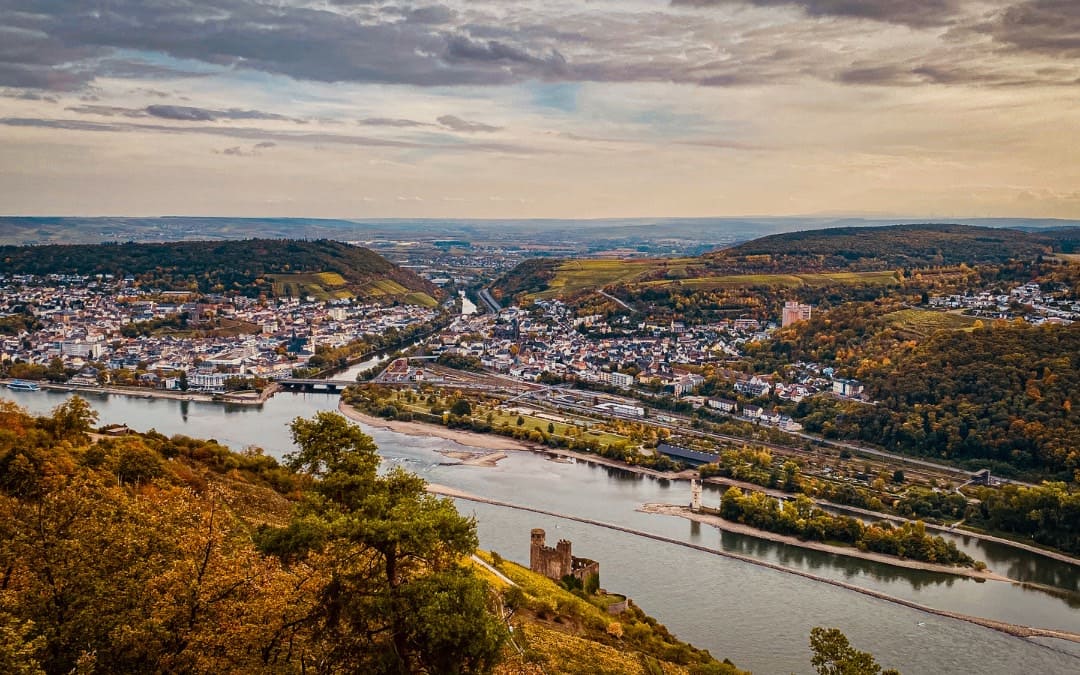
Mecklenburg-Western Pomerania
All UNESCO World Heritage Sites in Mecklenburg-Vorpommern at a glance
Ancient and Primeval Beech Forests of the Carpathians and Other Regions of Europe*
- Jasmund National Park (Rügen)
- Serrahn (Müritz National Park)
28. Historic Centers of Stralsund and Wismar
- Stralsund
- Wismar
Ancient and Primeval Beech Forests of the Carpathians and Other Regions of Europe*
In Mecklenburg-Western Pomerania, two regions are part of the UNESCO World Heritage Site Ancient Beech Forests:
- Jasmund National Park on Rügen:The breathtaking scenery of steep chalk cliffs, beech forests and the Baltic Sea already fascinated Romantic painters such as Caspar David Friedrich. Due to the impassable terrain, the forest here has never been used for forestry.
Tips:- Since April 22, 2023, you can experience the King's Chair on a barrier-free elliptical skywalk with viewing platform.
- You can enjoy the fascinating landscape during an unforgettable hike on the high shore trail , and at the National Park Center there is an interactive experience exhibition.
- The Serrahn is part of the Müritz National Park. Since it belonged to the grand ducal hunting grounds, it was not used for forestry, so that nature could develop undisturbed. Thus, in the middle of the Mecklenburg lake district, an enchanted region of very old beech forests, swamps and bogs was created.
Tip: Discover the beech forest during a hike on the forest adventure trail between Zinow and Serrahn.

28. Historic Centers of Stralsund and Wismar
UNESCO World Heritage since 2002
Stralsund and Wismar represent the importance of the Hanseatic League as a major trading power in the Baltic region between the 13th and 15th centuries. Both cities have well-preserved medieval architecture from the Brick Gothic period and had a significant influence on the architecture of the region and beyond. Both became Swedish during the Thirty Years' War. Baroque buildings such as the Provianthaus and Zeughaus in Wismar and the Swedish Government Palace in Stralsund date from the Swedish period.
Wismar is the best preserved Hanseatic city in the southern Baltic region. The "Old Swede" dates back to the 14th century and is the oldest town house in the city. Like the classicist City Hall, and Wismar Water Art (a unique well house built around 1602) it stands on the spacious Market Square. The towers of three distinctive brick churches rise into the sky: St. Mary's, St. George's and St. Nicholas'.
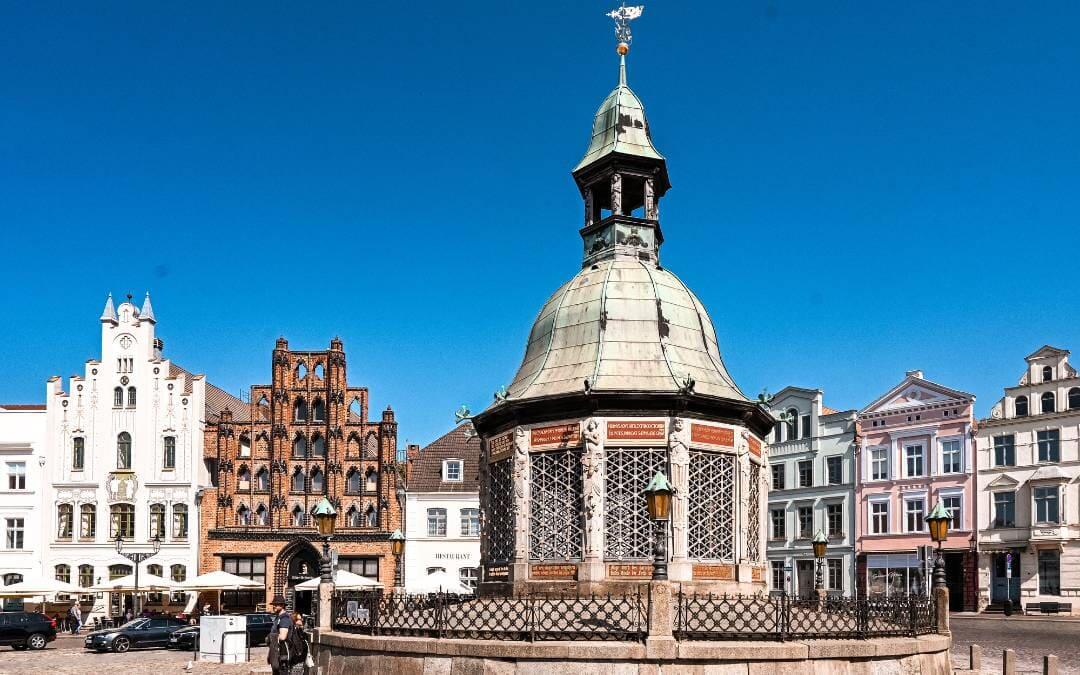
The old town of Stralsund impresses with its island location, to which the city owes the nickname "Venice of the North," as well as a unique ensemble of buildings from different eras, such as brick churches, monastery complexes, town houses and the historic town hall. Another highlight is the German Maritime Museum, with aquariums and exhibitions on maritime history. Stralsund is the ideal starting point for excursions to the nearby islands of Rügen and Hiddensee.
Lower Saxony
All UNESCO World Heritage Sites in Lower Saxony at a glance
29. St. Mary's Cathedral and St. Michael's Church at Hildesheim
31. Mines of Rammelsberg, Historic Town of Goslar and Upper Harz Water Management System
The Wadden Sea*
Click here for the description of the transnational UNESCO Wadden Sea World Heritage Site.
The Lower Saxony Wadden Sea has been protected as a national park since 1986 and is Germany's second largest national park. It borders the Dutch part of the Wadden Sea to the west at the Dollart and the Hamburg Wadden Sea National Park and the Elbe estuary near Cuxhaven to the east.
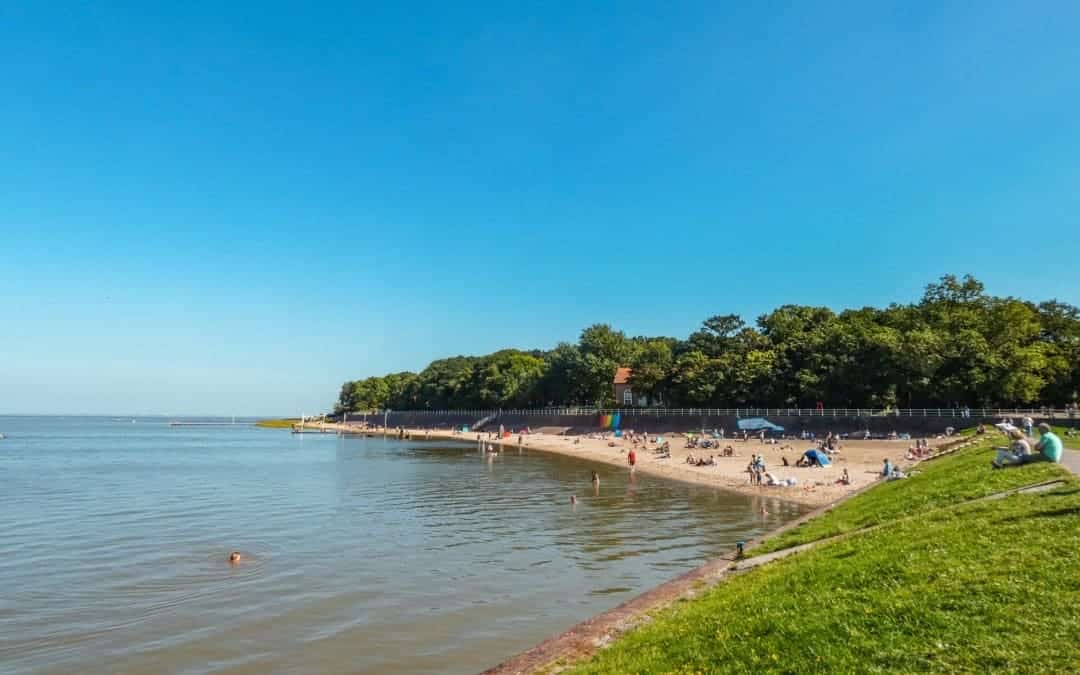
At low tide, mudflat walks are offered.
29. St. Mary's Cathedral and St. Michael's Church at Hildesheim
UNESCO World Heritage since 1985
The UNESCO World Heritage Site St. Mary's Cathedral and St. Michael's Church at Hildesheim includes two prime examples of early Romanesque architecture from the 11th century.
The Hildesheim Cathedral, officially known as St. Mary's Assumption, is one of the oldest and best preserved Episcopal churches in Germany. It was founded in the 9th century and expanded in the 11th century. The famous bronze doors of Bishop Bernward and a Christ column from about 1020, as well as the large wheel chandelier above the altar, are among the cathedral's most precious treasures.
The architecture of the former Benedictine abbey church St. Michael's was groundbreaking for further architectural developments in the Middle Ages. Among the outstanding works of art of St. Michaelis are the painted wooden ceiling of the central nave and the northern choir screen from the 13th century. Hildesheim Cathedral and St. Michael's Church are impressive testaments to Germany's medieval heritage.

30. Fagus Factory in Alfeld
UNESCO World Heritage since 2011
The Fagus Factory in Alfeld is considered a modernist architectural masterpiece and an early example of the use of reinforced concrete in industrial architecture. It was built in 1911 according to designs by the later Bauhaus Founder Walter Gropius and impresses to this day with its clear design language and transparent structure.
31. Rammelsberg Mine, the Old Town of Goslar and the Upper Harz Water Management System
Year of recording: Rammelsberg mine and old town of Goslar 1992, Oberharzer Wasserwirtschaft 2010
The World Heritage Site represents the region as an important center of mining and metal processing from the Middle Ages to modern times. It includes the Rammelsberg mine, which mined ore for over 1000 years, and the Old town of Goslar with over 1500 well-preserved half-timbered houses from different eras. The Upper Harz Water Management consists of a network of canals, ditches, ponds and dams built in the 16th to 19th centuries to transport water to power the mines.
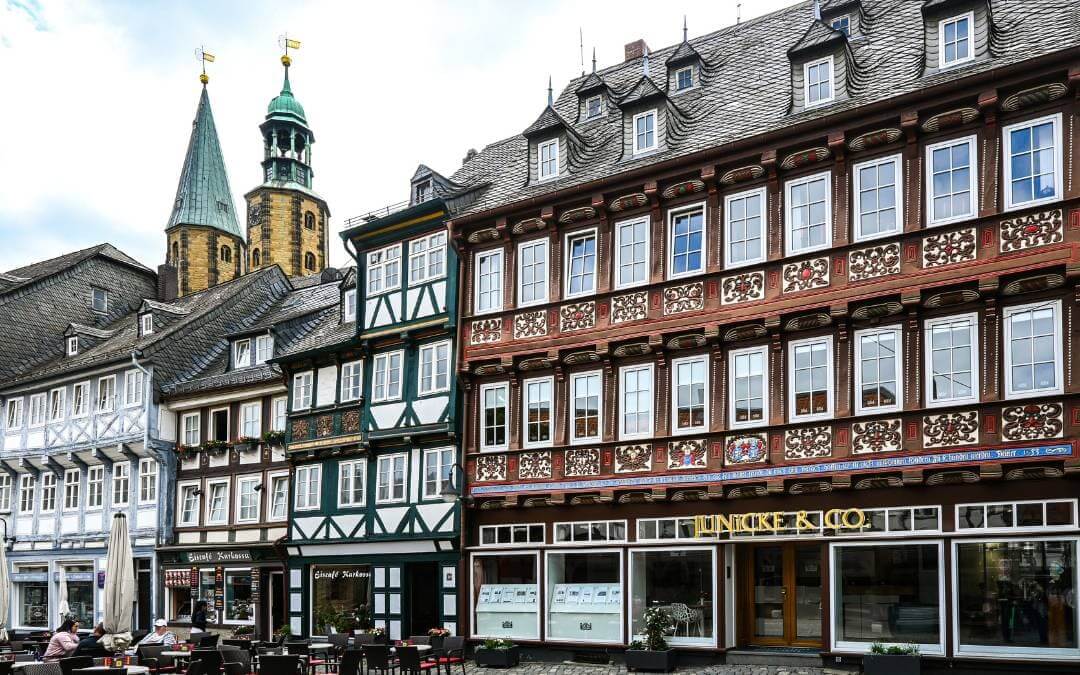
The raw material was mined in the surrounding mountains.
North Rhine-Westphalia
All UNESCO World Heritage Sites in North Rhine-Westphalia at a glance
33. borders of the roman empire - lower germanic limes*.
35. Carolingian Westwork and Civitas Corvey
36. Brühl Palaces Augustusburg and Falkenlust
37. Zollverein Coal Mine Industrial Complex in Essen
32. Aachen Cathedral
UNESCO World Heritage since 1978
The Aachen Cathedral was the first UNESCO World Heritage Site in Germany and, as the most important example of the Carolingian Renaissance, is one of the great masterpieces of religious architecture and art in the world. It is the burial place Charlemagnewho had the cathedral built in the 8th century - in only 10 years of construction - as the center of his empire. It was the first domed building north of the Alps since antiquity. The interior of the cathedral shows clear classical and Byzantine influences. For 600 years - from 936 to 1531 - Aachen Cathedral was the Coronation site of the German kings.

33. Frontiers of the Roman Empire - Lower Germanic Limes*.
UNESCO World Heritage since 2021
The Lower Germanic Limes stretches for about 400 km along the Rhine through the area of today's federal states of Rhineland-Palatinate and North Rhine-Westphalia to the Dutch North Sea coast. Since the Rhine formed the border here, the Lower Germanic Limes is also called the "Wet Limes". To monitor the border, the Romans stationed up to four legions along the Rhine in the areas of today's cities of Cologne, Bonn, Xanten and Nijmegen. Parts of the complex date back to Augustus, who reinforced the natural border of the Rhine from about 15 BC.
In North Rhine-Westphalia, you can immerse yourself in the Roman world in the LVR Archaeological Park Xanten - the largest archaeological open-air museum in Germany - and in the LVR-RömerMuseum . Other recommended Roman museums are the former Roman fort Haus Bürgel near Monheim, the Romano-Germanic Museum in Cologne and the Museum Linn Castle in Krefeld.

34. Cologne Cathedral
UNESCO World Heritage since 1996
The Cologne Cathedral is one of the most important cathedrals in the Christian world and a masterpiece of Gothic architecture. The construction of the cathedral began in the 13th century and lasted almost 600 years. In 1880 - the year of its completion - it was the largest building in the world. In the Golden Epiphany Shrine are kept the relics of the Magi, which were transferred from Milan to Cologne in the 12th century and made the cathedral an important place of pilgrimage.

35. Carolingian Westwork and Civitas Corvey
UNESCO World Heritage since 2014
The Civitas Corvey in Höxter was an important early medieval monastery town that played an important role in the spread of Christianity and culture in the early Middle Ages. The westwork (a church room to the west of the basilica) from the 9th century is considered the second oldest surviving example of Carolingian architecture (after Aachen Cathedral).

36. Brühl Palaces Augustusburg and Falkenlust
UNESCO World Heritage since 1984
The Augustusburg and Falkenlust palaces in Brühl were the first rococo masterpieces in Germany. In 1725, Elector and Archbishop Carl August commissioned the construction of his summer residence Augustusburg Palace, for which renowned European architects and artists were engaged. The showpiece of the castle is the staircase by Balthasar Neumann (the star architect of the Würzburg Residence) with a grandiose ceiling fresco by Carlo Carlone. Falkenlust Palace is just a short walk from Augustusburg and served as the elector's hunting lodge.

37. Zollverein Coal Mine Industrial Complex in Essen
UNESCO World Heritage since 2001
The Zollverein Coal Mine Industrial Complex in Essen once was the largest coal mine in the world and is now an industrial monument and cultural center. With this plant, the architects Fritz Schupp and Martin Kremmer created a Bauhaus style masterpiecein the 1920s. Coal was mined here for 135 years until its closure in 1986.

Rhineland-Palatinate
All UNESCO World Heritage Sites in Rhineland-Palatinate at a glance
Major spa towns in Europe* - Bad Ems
Borders of the Roman Empire - Lower Germanic Limes*.
2. Frontiers of the Roman Empire - Upper Germanic-Rhaetian Limes*.
38. ShUM Sites of Speyer, Worms and Mainz
- SchUM sites in Speyer
- SchUM sites in Worms
- SchUM sites in Mäinz
40. Roman Monuments, Cathedral of St. Peter and Church of Our Lady in Trier
The Great Spa Towns of Europe* - Bad Ems
With Bad Ems, Rhineland-Palatinate can also boast one of the Great Spa Towns of Europe. The 15 thermal springs, spa house, colonnades, course hall, casino and spa park are located close together on the Lahn. A bathing tradition developed here as early as the Middle Ages. In the 19th century, the Russian Tsar Alexander II and the Prussian King Wilhelm I liked to take a cure in Bad Ems.

Frontiers of the Roman Empire - Lower Germanic Limes*
Only 20 km of the approximately 400 km long Lower Germanic Limes are located on the territory of Rhineland-Palatinate at Remagen. Here the remains of Castle Rigomagus mark the southernmost base of the Lower Germanic Limes. The Roman Museum in Remagen shows finds from the time of ca.100 to 500 AD.
2. Frontiers of the Roman Empire - Upper Germanic-Rhaetian Limes*.
The Upper Germanic-Raetian Limes begins on the Rhine near Rheinbrohl. The first 75 km of the Upper Germanic Limes run through Rhineland-Palatinate. Since the Limes in Rhineland-Palatinate lies predominantly in the forests of the Westerwald and Taunus, ramparts and ditches as well as rubble mounds of the watchtowers are often still visible, and accessible from the Limes hiking trails. The Roman World and the Limes Information Center in Rheinbrohl provide insight into the everyday life of the stationed troops as well as the course and function of the Limes in the region.
Upper Middle Rhine Valley*
You can find the description of the UNESCO World Heritage Upper Middle Rhine Valley under Hessewhich shares the World Heritage title with Rhineland-Palatinate.
In the German Corner in Koblenz . Take the cable car to Ehrenbreitstein Castle and enjoy the view of the confluence of the Rhine and Moselle. During a boat trip and hikes across the Rhine Castle Trail or the Rheinsteig you can experience the beautiful area from different perspectives.
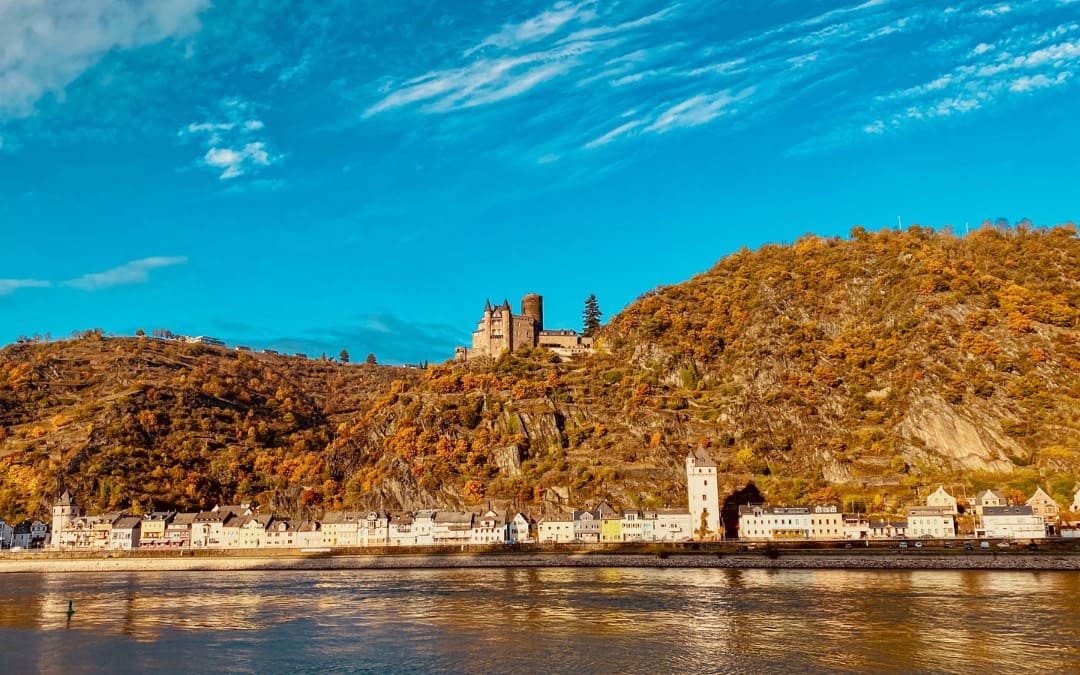
like here from St. Goar to the castle Katz and St. Goarshausen.
38. ShUM Sites of Speyer, Worms and Mainz
UNESCO World Heritage since 2021
The three ShUM cities Speyer (Schpira), Worms (Warmaisa) and Mainz (Magenza) were centers of Jewish learning and spirituality in Europe in the Middle Ages. These important Jewish communities have enjoyed a high reputation in the Jewish world since the Middle Ages until today. The World Heritage Site includes synagogues, cemeteries and mikvahs, as well as Jewish quarters and houses whose history dates back to the 10th century and which are among the oldest testimonies of Jewish life and architecture in Europe.
SchuM is an acronym formed from the first letters of the medieval Hebrew city names Shin (= Shpira = Speyer), Waw (U) (= Warmaisa = Worms) and Mem (M) (= Magenza = Mainz).
The following buildings/ensembles are UNESCO World Heritage Sites ShUM Sites of Speyer, Worms and Mainz:
- In Speyer: the ensemble of the Judenhof community center with mikvah, synagogue, women's school, synagogue courtyard and archaeological site. Yeshiva.
- In Worms: the synagogue district community center ensemble with synagogue, women's school, Jewish council chamber with vestibule to the women's school, "Rashi yeshiva", synagogue courtyard, mikvah and the medieval foundations of the former community house (today Rashi House with the Jewish Museum, the city archives and the Lower Monument Preservation Office), as well as the old Jewish cemetery "Sacred sand".
- In Mainz: the old Jewish cemetery "on the Jewish sand" with a unique monument cemetery. Eight gravestones from the 11th century have been preserved here.
39. Speyer Cathedral
UNESCO World Heritage since 1981
The Speyer Cathedral - officially Cathedral Church of St. Mary and St. Stephen - is the largest Romanesque church in the world and a landmark of medieval architecture. It is an expression of imperial power at the time of the Salian dynasty (1024 - 1125). Construction began in 1030 under Emperor Conrad II, who wanted to build the largest church in the western world. Already Conrad's grandson, Henry IV, had the cathedral completely rebuilt and gave it its current shape. Speyer Cathedral was the burial place of German rulers for almost 300 years, from Conrad II until Albrecht of Habsburg in 1309.

40. Roman Monuments, Cathedral of St. Peter and Church of Our Lady in Trier
UNESCO World Heritage since 1986
The city of Trier was founded in 16 BC by the Roman Emperor Augustus, making it Germany's oldest city. It is home to numerous Roman monuments, including the famous Porta Nigra , the Barbara Baths and Imperial Baths. In the 4th century AD, Trier was the fourth largest city in the world with around 80,000 inhabitants!
The Trier Cathedral is one of the oldest church buildings in the western world and symbolizes Constantine's recognition of Christianity in the Edict of Milan in 313. Next to the cathedral stands the High Gothic Church of Our Lady. Together with the Elisabeth Church in Marburg, it is considered the oldest Gothic church in Germany.
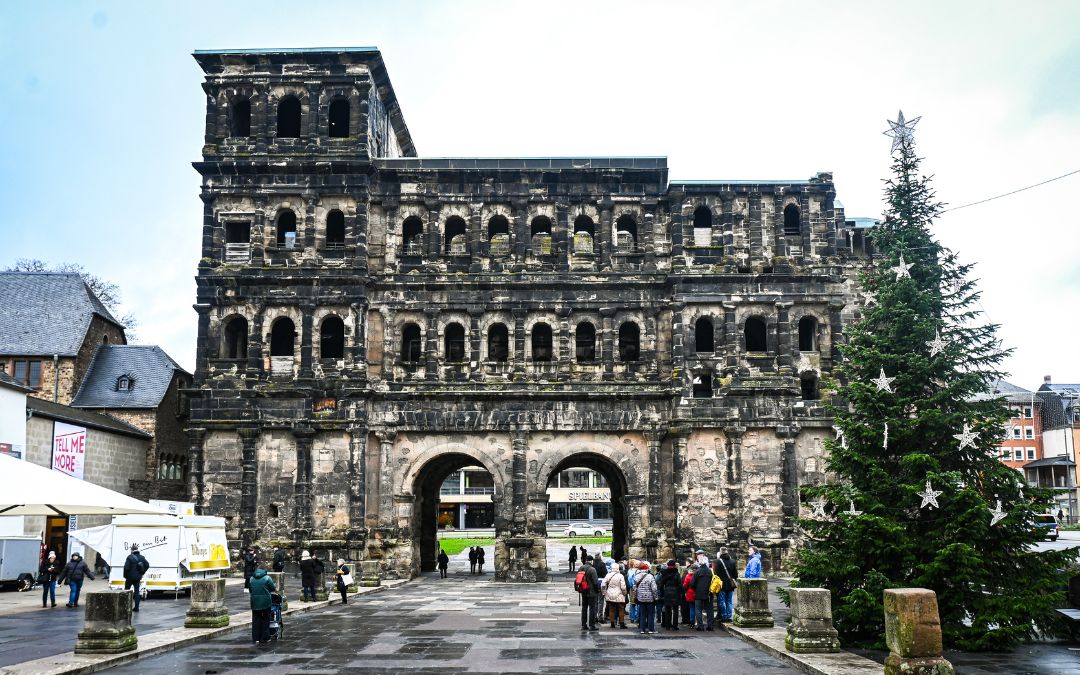
Saarland
UNESCO World Heritage Site Völklingen Ironworks at a glance
41. Völklingen Ironworks
UNESCO World Heritage since 1994
Of the many pig-iron production facilities built in the 19th and 20th centuries in the USA and Europe, the Völklingen Ironworks is the only one still completely preserved and therefore a unique industrial monument. The plant was founded in 1873 and was in operation until 1986. Today, visitors can explore the impressive industrial architecture and learn more about the history of iron and steel production. It also hosts various cultural events and exhibitions.
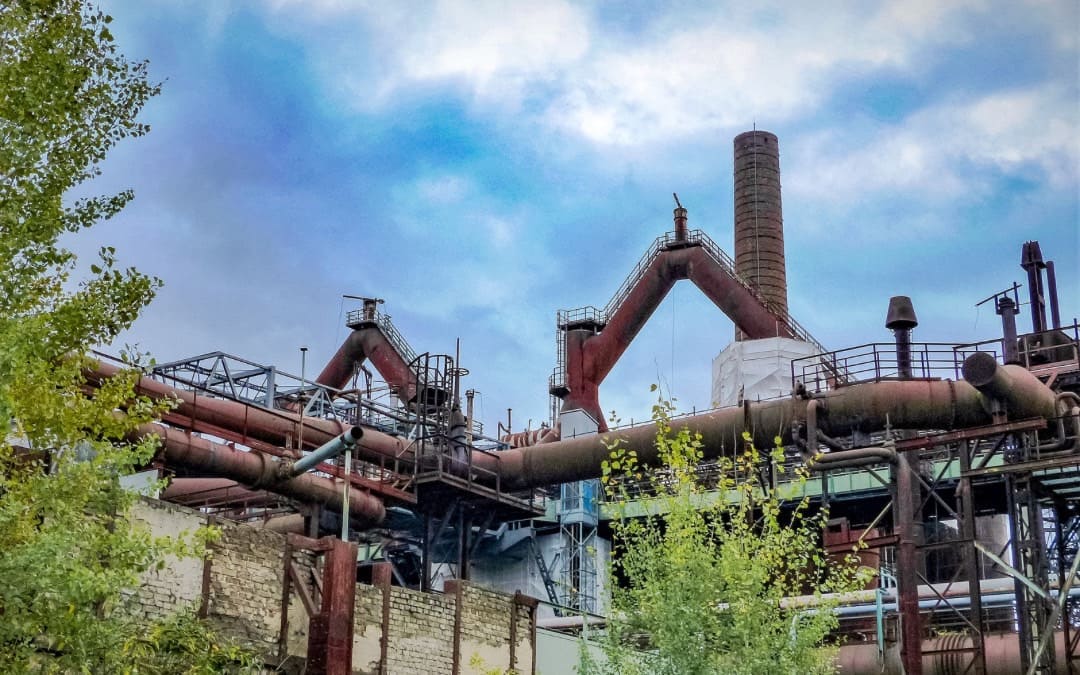
from the heyday of the steel industry in the 19th and 20th centuries.
Saxony
All UNESCO World Heritage Sites in Saxony at a glance
42. Muskauer Park/Park Mużakowski
43. Erzgebirge/Krušnohoří Mining Region
42. Muskauer Park/Park Mużakowski
UNESCO World Heritage since 2004
The landscape park is a joint Polish-German cultural heritage. It stretches on both sides of the Neisse River and is located one-third in Bad Muskau, Saxony, and two-thirds in Poland. The Muskauer Park/Park Mużakowski was laid out by Prince Hermann von Pückler-Muskau - a bon vivant, travel writer and landscape gardener - in the 19th century, and is the largest English-style landscape park in Central Europe. Pückler's innovative design ideas (such as incorporating the community into the overall work of art) still have a major influence on landscape architecture and contemporary urban planning. In the castle café, you can enjoy an original Prince Pückler (Neapolitan) ice cream!

43. Erzgebirge/Krušnohoří Mining Region
UNESCO World Heritage since 2019
The Erzgebirge/Krušnohoří Mining Region is a cross-border World Heritage Site on the Saxon and Czech sides of the Ore Mountains. The historic mining facilities, monuments, natural and cultural landscapes represent the history of mining in the Ore Mountains from the 12th to the 20th century. The organizational forms and technologies developed here in the mining of precious and non-ferrous metal ores influenced economic and overall societal changes in Europe and throughout the world. Today, visitors can tour the former mines, stockpiles and industrial facilities and learn a lot about the history of mining.

44th Moravian Church
UNESCO World Heritage Site since 2024
The settlements of the Moravian Church in Herrnhut were recognized by UNESCO on 26.7.2024 as a Part of a transnational world heritage site which also includes settlements in the USA (Bethlehem in Pennsylvania), Northern Ireland (Gracehill) and Denmark (Christiansfeld in Jutland). The Moravian Church was founded in 1722 by religious exiles from Bohemia and Moravia and developed into an important center of the Pietist movement.
The heart of the settlement is Zinzendorfplatz, named after Count Nikolaus Ludwig von Zinzendorf, who offered protection to the first religious refugees from Moravia on his Berthelsdorf estate. This is how the town of Herrnhut got its name - the settlers found themselves "under the Lord's hat". On Zinzendorfplatz you will find the baroque church hall of the Moravian Church, which is a typical example of the simple, functional architecture (the "Herrnhut Baroque") of the Moravian Church. This Protestant free church lives a solidary idea of Christianity and has around 1.2 million members worldwide, most of them outside Europe.
The Gottesacker, the parish cemetery, is exemplary. The gravestones are uniformly simple and symbolize the equality of all people before God.
Herrnhut is also home to the Ethnological Museum, which houses an extensive collection of exhibits from the mission territories of the Moravian Church worldwide. Here you can learn more about the global activities of the Moravian Church and its influence on different cultures. The permanent exhibition is currently being redesigned and is therefore closed. The exhibition TALANOA - Coming together however, is open.

Saxony-Anhalt
All UNESCO World Heritage Sites in Saxony-Anhalt at a glance
Bauhaus and its Sites in Weimar, Dessau and Bernau*
45th Garden Kingdom Dessau-Wörlitz
46th Luther Memorials in Eisleben and Wittenberg
- Lutherstadt Eisleben
- Lutherstadt Wittenberg
48th collegiate church, castle and old town of Quedlinburg
Bauhaus and its Sites in Weimar, Dessau and Bernau*
UNESCO World Heritage since 1996
The Bauhaus Museum in Dessau was opened in 2019 to mark the 100th anniversary of the founding of the Bauhaus. Until then, there was not enough space to present the valuable and extensive collection of around 50,000 objects. In the historic Bauhaus building and in the Master Houses as well as at the Settlement Dessau-Törten excellent tours are offered, with the App Bauhaus Dessau an individual tour is also possible.

A guided tour is recommended.
45. Garden Kingdom of Dessau-Wörlitz
UNESCO World Heritage since 2000
The Garden Kingdom of Dessau-Wörlitz is a unique ensemble of parks and gardens created in the 18th century by Prince Leopold III of Anhalt-Dessau and his advisor, architect Friedrich Wilhelm von Erdmannsdorf. The gentlemen found inspiration on their "Grand Tours" to England, France, Italy and the Netherlands. The park combines natural and designed elements and was the first English landscape garden on the European mainland. Goethe, who was himself a passionate gardener, also visited the prince often. More than 100 smaller and larger buildings and various parks are embedded in the river landscapes on the Elbe and Mulde. You can explore the magnificent park landscape on foot, by bike and by boat.
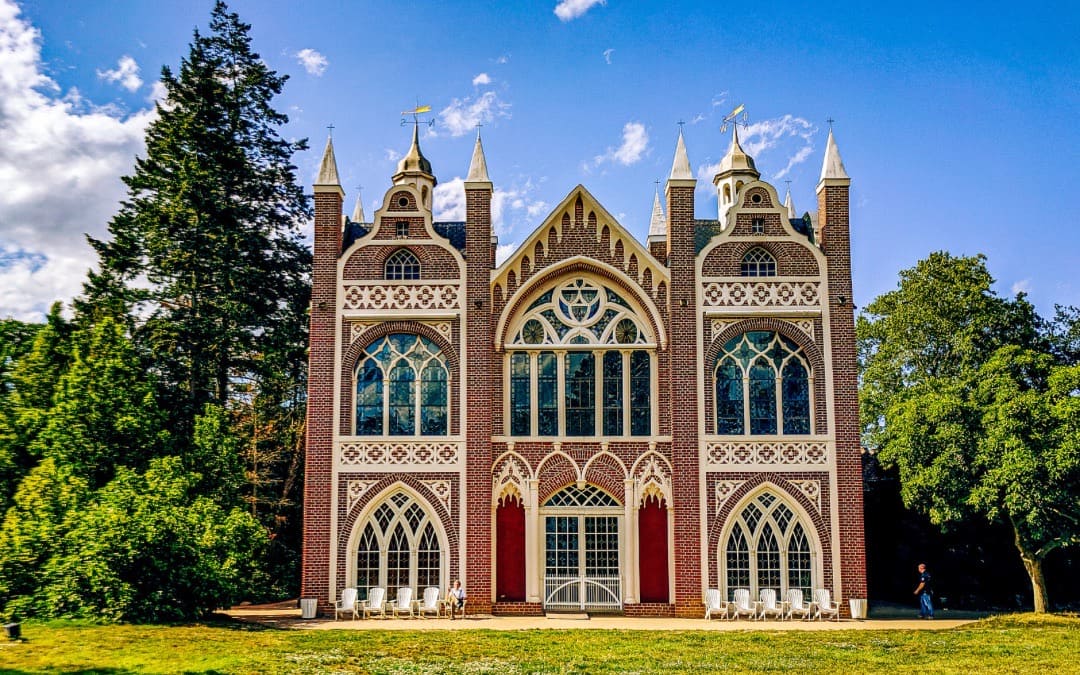
The facade of the garden side is built in English Tudor style,
the front to the Wolf Canal in the style of a Venetian church.
46. Luther Memorials in Eisleben and Wittenberg
UNESCO World Heritage since 1996
The Luther Memorials in Eisleben and Wittenberg are important places of the Reformation and commemorate the life and work of Martin Luther. Eisleben is where Luther was born and where he died, while Wittenberg was the site of his famous 95 theses. Visitors can tour the homes and churches where Luther lived and preached, and learn much about the Reformation and its impact.

47. Naumburg Cathedral:
UNESCO World Heritage since 2018
The Naumburg Cathedral St. Peter and Paul is a late Romanesque-early Gothic cathedral from the 13th century and one of the most beautiful churches in Germany. It is known for its outstanding architecture and works of art, especially the twelve donor figures in the west choir - created by the "Naumburg Master", whose name is unknown. The figures are among the most important sculptures of the High Middle Ages. They represent important noblemen who were active in Saxony and Thuringia in the 11th century. The most famous of the figures is "Uta of Naumburg", whose real name was Uta of Ballenstedt and who was the wife of Margrave Ekkehard II. Uta was instrumentalized by the Nazis as the ideal image of the German woman. In response, Walt Disney used Uta as the model for the evil stepmother in "Snow White and the Seven Dwarfs" in 1937.
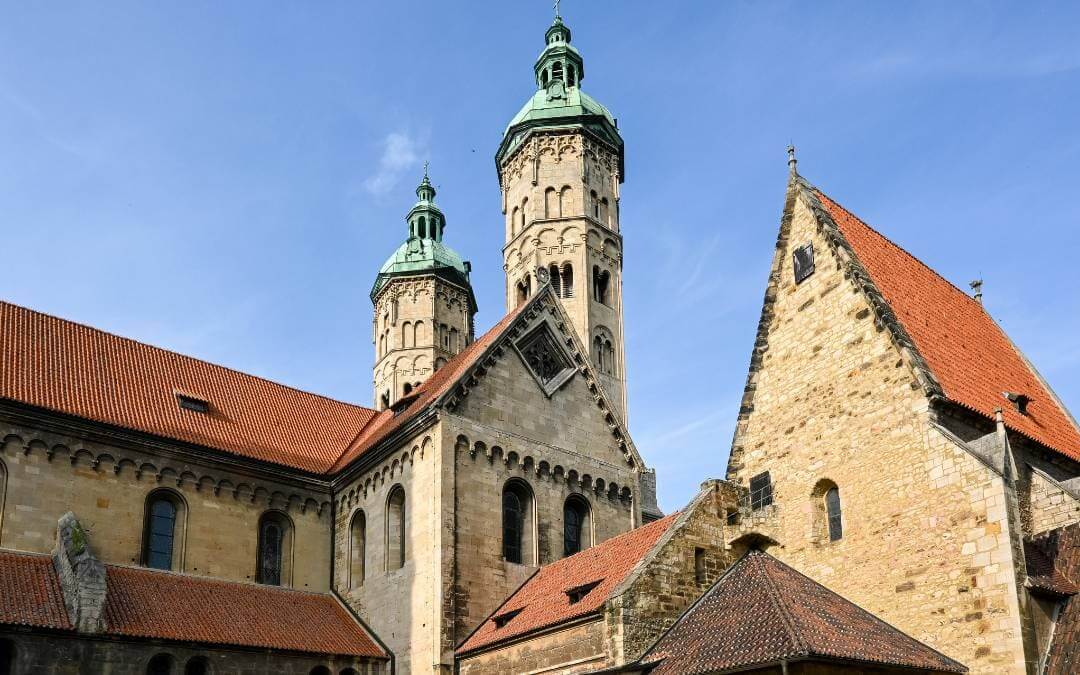
48. Collegiate Church, Castle and Old Town of Quedlinburg
UNESCO World Heritage since 1994
Quedlinburg was one of the most important royal and imperial palaces in the Middle Ages. With more than 2,000 half-timbered houses from six centuries, the town offers a fascinating insight into the history and architecture of the region.
The collegiate church of St. Servatius on the Schlossberg (castle hill) is the burial place of the first German king, Henry I, and is considered an architectural masterpiece of the Romanesque period. With its richly decorated facades, winding alleys and magnificent Renaissance town hall, the old town is a highlight for all history and architecture fans.
Quedlinburg's surroundings are also worth exploring, for example on a trip with the Harz narrow-gauge railroads to the highest mountain in the Harz, the Brocken, or to the beautiful town of Wernigerode.
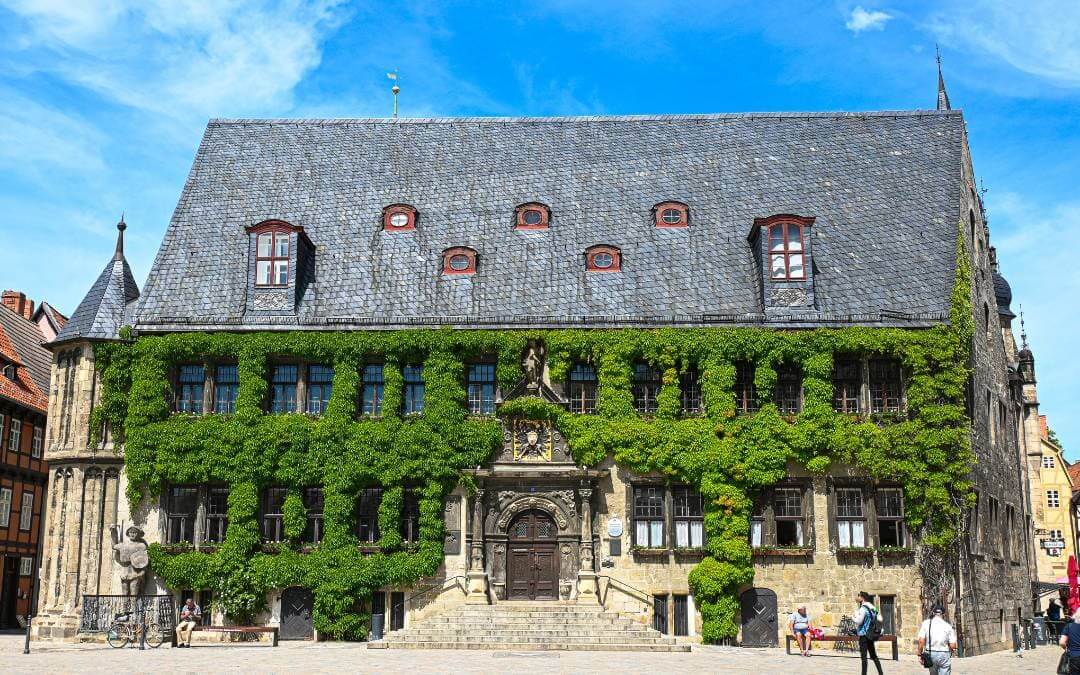
Schleswig-Holstein
All UNESCO World Heritage Sites in Schleswig-Holstein at a glance
50th Archaeological border complex Haithabu and Danewerk
- Hedeby
- Danevirke
49. Hanseatic City of Lübeck
UNESCO World Heritage since 1987
The historical Lübeck old town is surrounded by water and was one of the most important cities in the Hanseatic League from 1230 to 1535. Lübeck was the first city area to be included in the UNESCO World Heritage List in 1987. The city is an outstanding example of the importance of the Hanseatic League and the architecture of the Brick Gothic style since the 12th century, including the famous Holsten Gate, five churches, the magnificent town hall, the Burgkloster, venerable patrician houses and the salt warehouses on the Trave banks. Founded in 1143 as the first "occidental city on the Baltic coast", Lübeck has a great past as one of the early centers of world trade.
In addition, Lübeck produced three Nobel Prize winners whose former homes are now museums and well worth a visit: Thomas Mann,, Willy Brandt and Günter Grass. Thomas Mann created a literary monument to his childhood home with his novel of the century, "Die Buddenbrooks". Former German Chancellor and Nobel Peace Prize winner Willy Brandt spent his childhood and youth at Königstrasse 21. Just around the corner, the Günter Grass House presents the life and work of the 1999 Nobel Prize winner for literature.
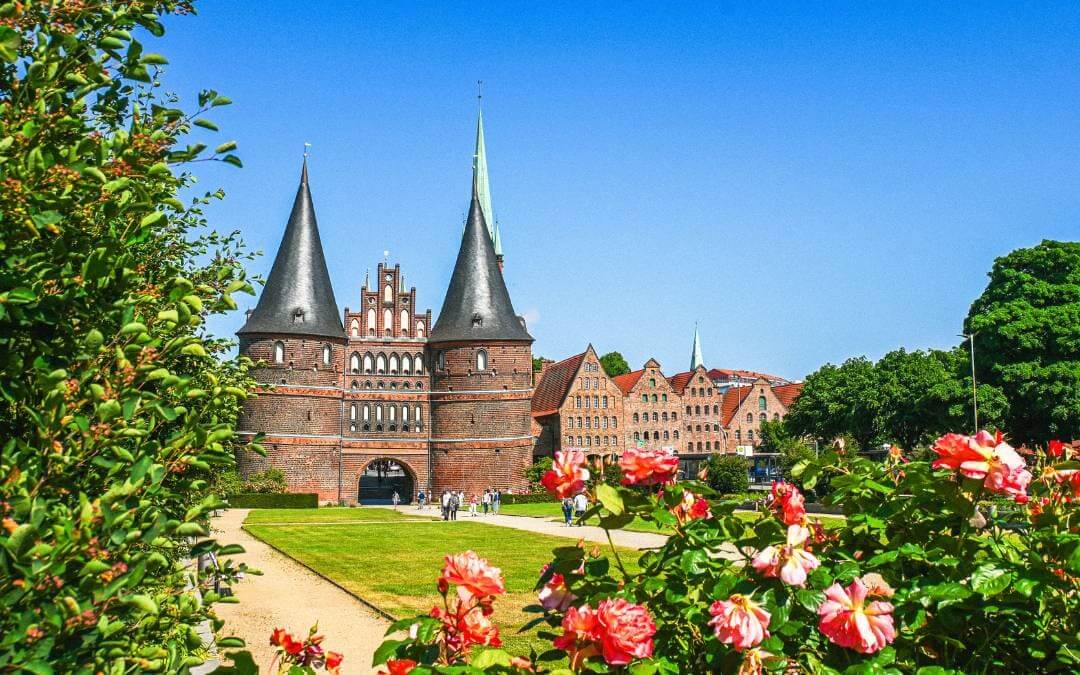
50. Archaeological Border Complex of Hedeby and the Danevirke
UNESCO World Heritage since 2018
Hedeby was an important Viking settlement and significant trade and transport hub of the Viking Age between the 8th and 11th centuries. Today it is an open-air museum that gives visitors an insight into the life of the Vikings. Unique original finds are presented in the museum, and seven Viking houses and a landing bridge have been reconstructed on the site.
With the Danevirke, an 8th-century fortification stretching more than 30 kilometers, the Danish Viking kings demarcated themselves against Christian France and later against the German Roman Empire. It is considered one of the most important military installations of the Middle Ages in Northern Europe.
In the Viking Age, the ramparts of the Danevirke connected Hedeby on the Schlei with Hollingstedt on the Treene, which provided access to the North Sea.

Thuringia
All UNESCO World Heritage Sites in Thuringia at a glance
Hainich National Park: Ancient and Primeval Beech Forests of the Carpathians and Other Regions of Europe*
Bauhaus and its Sites in Weimar, Dessau and Bernau*
- Bauhaus University main building (former art school)
- Former School of Arts and Crafts (Van de Velde Building)
- Haus am Horn
51st Jewish-Medieval Heritage in Erfurt
- Old Synagogue
- Medieval mikvah
- Stone house
- Goethe's Residence
- Schiller's Residence
- Goethe's Gartenhaus
- Park on the Ilm with Roman House
- Historic cemetery with princely crypt
- City Church of St. Peter and Paul (Herderkirche)
- Herder's house
- Wittumspalais
- City Palace
- Belvedere Palace
- Ettersburg Castle
- Tiefurt Palace and Park
Ancient and Primeval Beech Forests of the Carpathians and Other Regions of Europe*
In Thuringia, the Hainich National Park part of this UNESCO World Heritage Site. With about 160
The limestone beech forests of the Hainich are unique in the world and home to many endangered animal and plant species, including wildcat, Bechstein's bat, many bird species as well as endangered orchid, fungus and deadwood beetle species. The region was a restricted military area during GDR times, which allowed flora and fauna to develop undisturbed.
You can experience the national park in many ways, for example on the Treetop Path, which offers a breathtaking view over the forest, or in the Wild Cat Village Hütscheroda.
Bauhaus and its Sites in Weimar, Dessau and Bernau*
The Bauhaus in Weimar: a magnificent new Bauhaus Museum that presents the oldest Bauhaus collection in the world was opened in 2019. Also, a visit to the Bauhaus University and the Haus am Horn provide insight into the history of the Bauhaus and the idea of modernism in architecture and design.
The UNESCO World Heritage Site includes the Art school building (today the main building of the Bauhaus University, designed 1904 - 1911 by Henry van de Velde), the School of Arts and Crafts ("Van de Velde Building", designed 1905 - 1906 by Henry van de Velde) and the Haus Am Horndesigned by Georg Muche for the first Bauhaus exhibition in 1923.
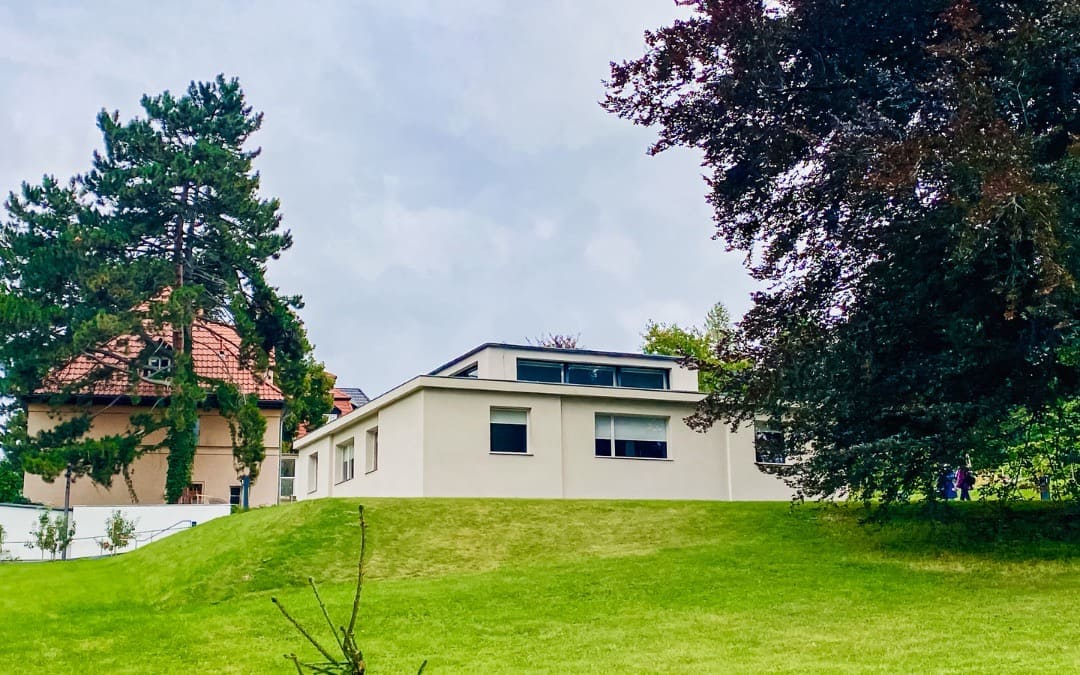
how they envisioned the building and living of the future.
51st Jewish-Medieval Heritage in Erfurt
UNESCO World Heritage since 2023
The Jewish medieval heritage in Erfurt was recognized by UNESCO as a World Heritage Site on 18.9.2023. It includes the Old Synagogue, the Mikveh and the Stone House,which are all located in the historic old town.
The Old Synagogue in Waagegasse is one of the oldest, largest and best-preserved medieval synagogues in Europe right up to the roof. The building shows the different construction phases from its construction around 1100, its use after the devastating progrom of 1349 to the renovations in the 19th and 20th centuries. The city of Erfurt bought the house in 1998, renovated it and set up a museum. On a guided tour of the Old Synagogue and the mikvah, you will learn a lot about the history of the buildings and Jewish life in medieval Erfurt. The Old Synagogue also houses the unique Erfurt Treasure, which was probably buried during the pogrom of 1349.
The mikvah is a Jewish ritual bath built in the 12th century on the banks of the Gera River. It was used for ritual purification after touching something "unclean" in a religious sense, such as blood or the dead. After the city council forced the Jews to leave Erfurt in 1453/54, the mikvah was forgotten and was only rediscovered by archaeologists in 2007.
The Steinerne Haus is a Jewish historical residential building from the 12th and 13th centuries. It is located in a multi-part residential complex at Benediktsplatz 1 in Erfurt's Old Town. It can be attributed to Jewish owners at least since the end of the 13th century. A surprising number of original structures have been preserved in the house, such as the upper-floor room with a pointed-arched light niche with a smoke outlet and a colored wood-beamed ceiling from 1247.
These sites are unique architectural testimonies of the important Jewish community from the period between the end of the 11th and the middle of the 14th century. With the Jewish medieval heritage in Erfurt, for the second time (after the inclusion of the SchUM sites in Mainz, Speyer and Worms 2021) Jewish cultural heritage in Germany was included in the UNESCO World Heritage List.
Find out why Erfurt is one of the most beautiful cities in Germany for me the Cathedral's website.
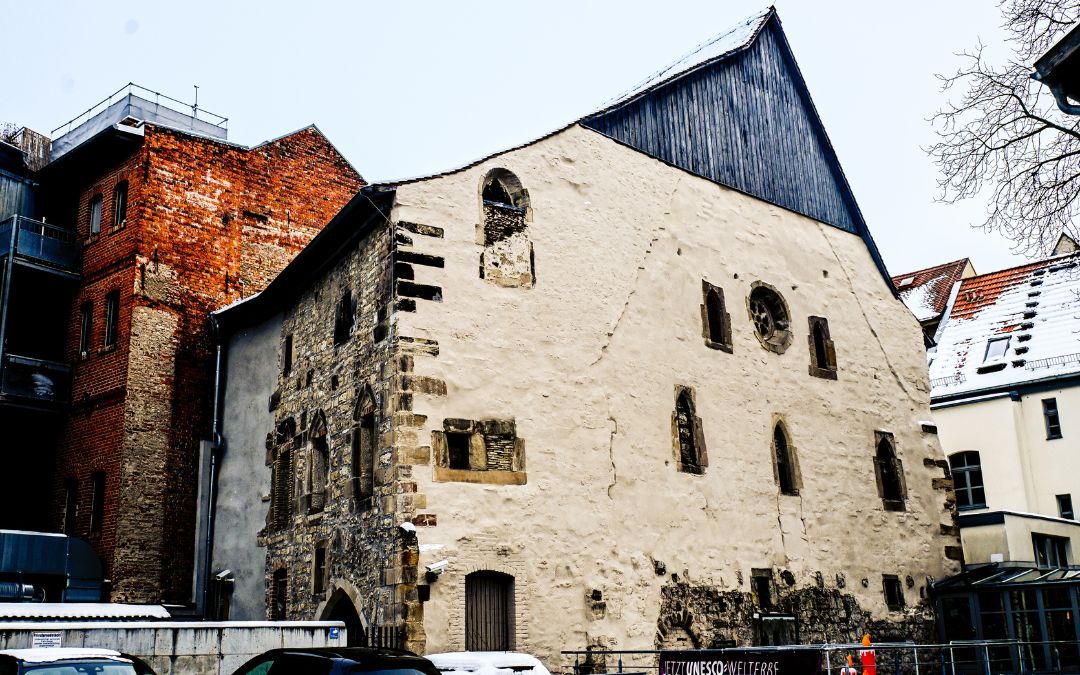
52. Wartburg Castle
UNESCO World Heritage since 1999
Wartburg Castle towers "high above the city of Eisenach as an outstanding monument to the feudal era in Central Europe" (German UNESCO Commission). According to legend, founded in 1067 by Louis the Knight, it stands pretty much in the center of Germany and represents German history like no other castle. Martin Luther hid here for ten months (May 4,1521, to March 3,1522) under the name "Junker Jörg" and translated the New Testament from ancient Greek into German in a sensational 11 weeks. In doing so, he created the basis for the standardized German written language. Also, the legendary Sängerkrieg (minstrel contest), Wagner's "Tannhäuser, the Wartburg Festival 1817 and life and work of Elizabeth of Hungary (in Germany "Saint Elizabeth of Thuringia") are inseparably connected with the Wartburg.
On the last section of the steep climb from Eisenach to Wartburg Castle, a few signs with uplifting quotes from Martin Luther make the last few meters easier, such as "Wine for the dead, water for the living - that's a rule for fish." Don't miss climbing up the castle's south tower, from which you'll have a magnificent view over Eisenach and the Thuringian Forest.
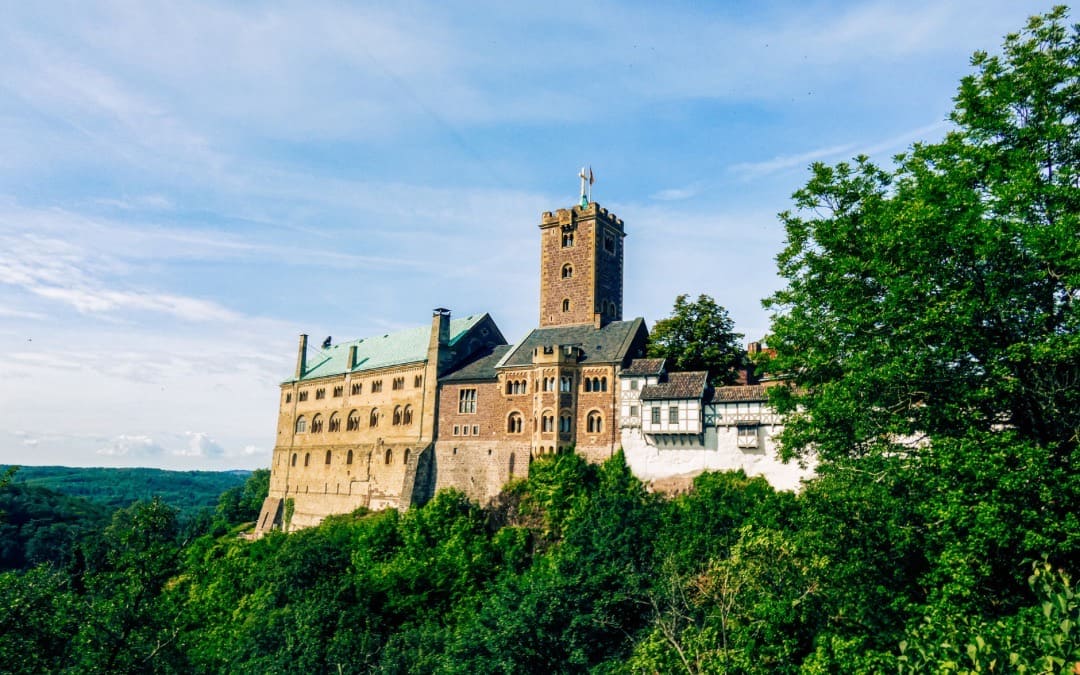
53. Classical Weimar
UNESCO World Heritage since 1998
To the UNESCO World Heritage Site Classical Weimar include 12 buildings and ensembles (marked in the overview map for Thuringia) in Weimar:closely associated with the city's heyday as a center of German intellectual life - that is, the late 18th and early 19th centuries, when Goethe, Schiller., Herder and Wieland lived and worked here. These include Goethe's baroque residence am Frauenplan, where he lived for 50 years, and his first house in Weimar - the Garden house in the park on the Ilmwhich was a gift from Duke Carl August and always remained Goethe's retreat. Schiller and Herder came to Weimar at Goethe's instigation - and their Residential buildings and the Herder Church are part of the world cultural heritage. The famous Rococo Hall of the Anna Amalia Library, which Goethe directed from 1797 until his death in 1832, is a true showpiece of classical Weimar. It is moving to be in the Ducal Vault on the Historic cemetery standing in front of Goethe's and Schiller's coffins (although Schiller's is empty since DNA analysis revealed that the bones it contained were not those of Schiller).
If you are prepared to get involved with German classicism, you will be richly rewarded in Weimar! Nowhere else will you get closer to Goethe and Schiller than here. In my opinion, Weimar is also one of the most beautiful cities in Germany.
You want to get to know Weimar better?
In my complete city guide for Weimar: you will receive all the information about the most important sights, a suggestion for the best city tour and lots of practical tips.
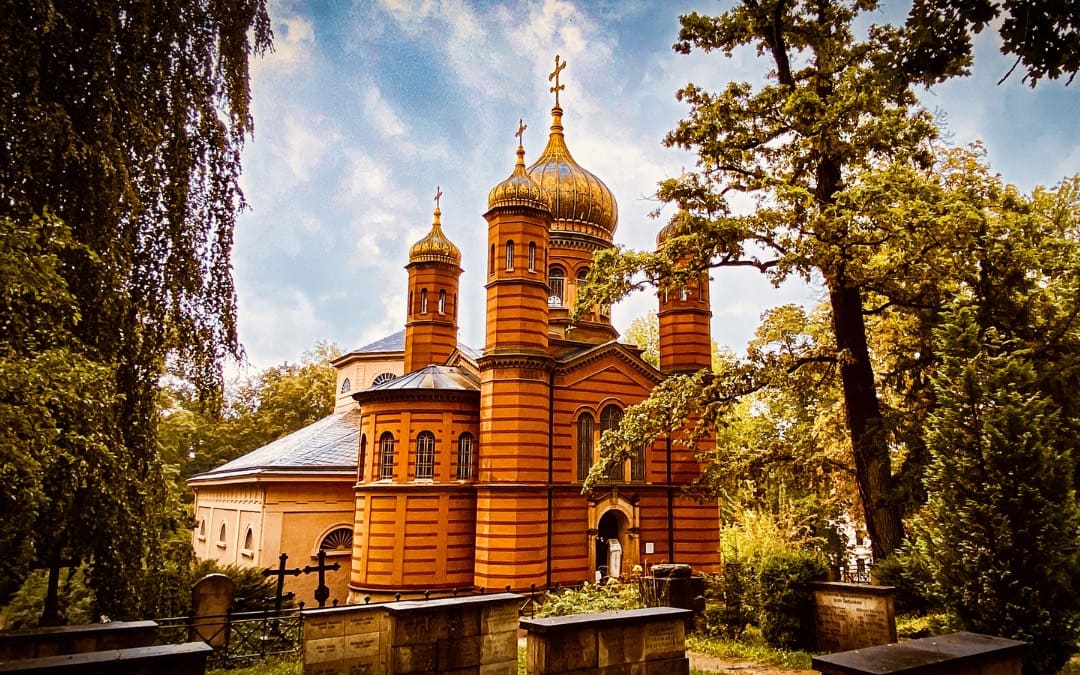
Goethe's and Schiller's coffins are in the Princely Crypt behind the Russian Chapel.

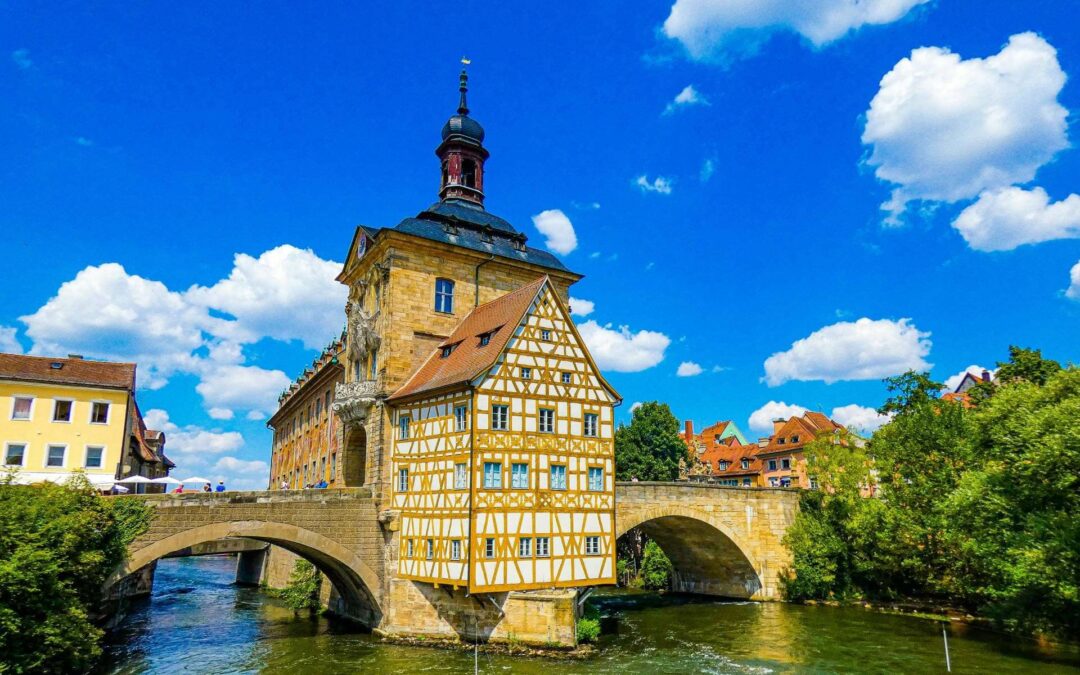
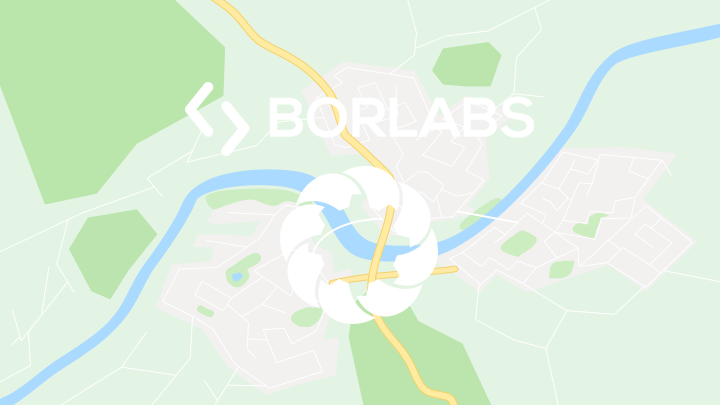
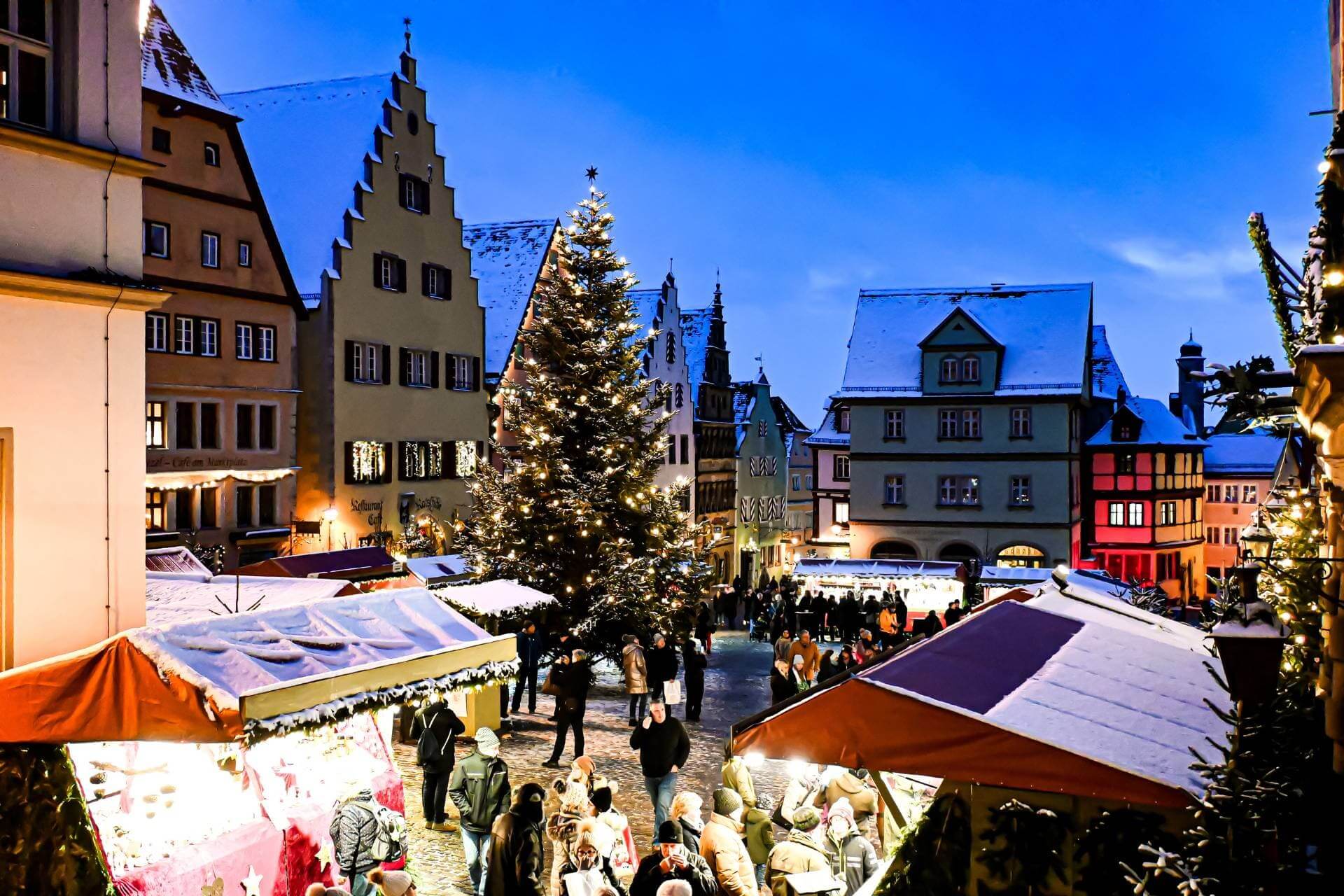
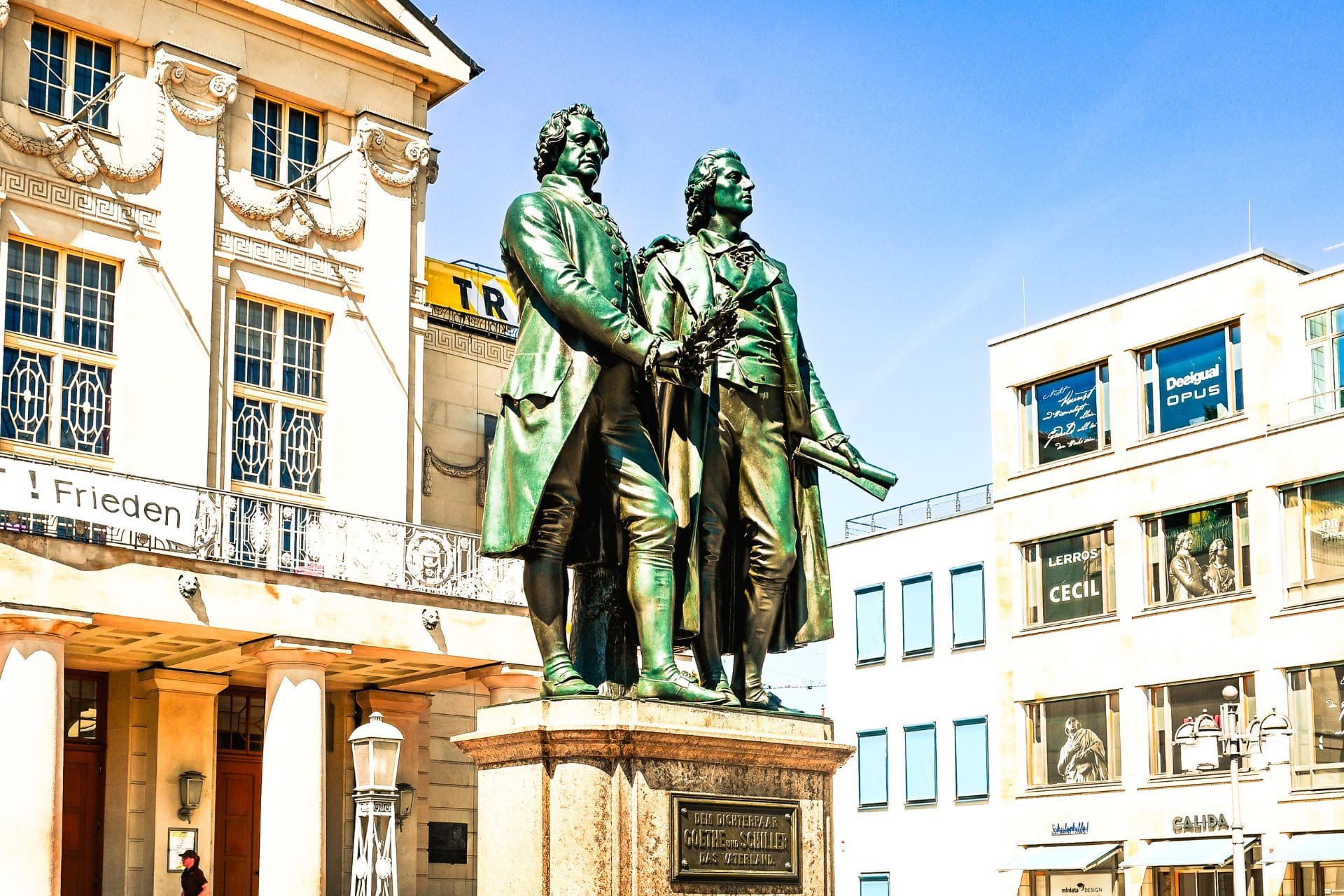
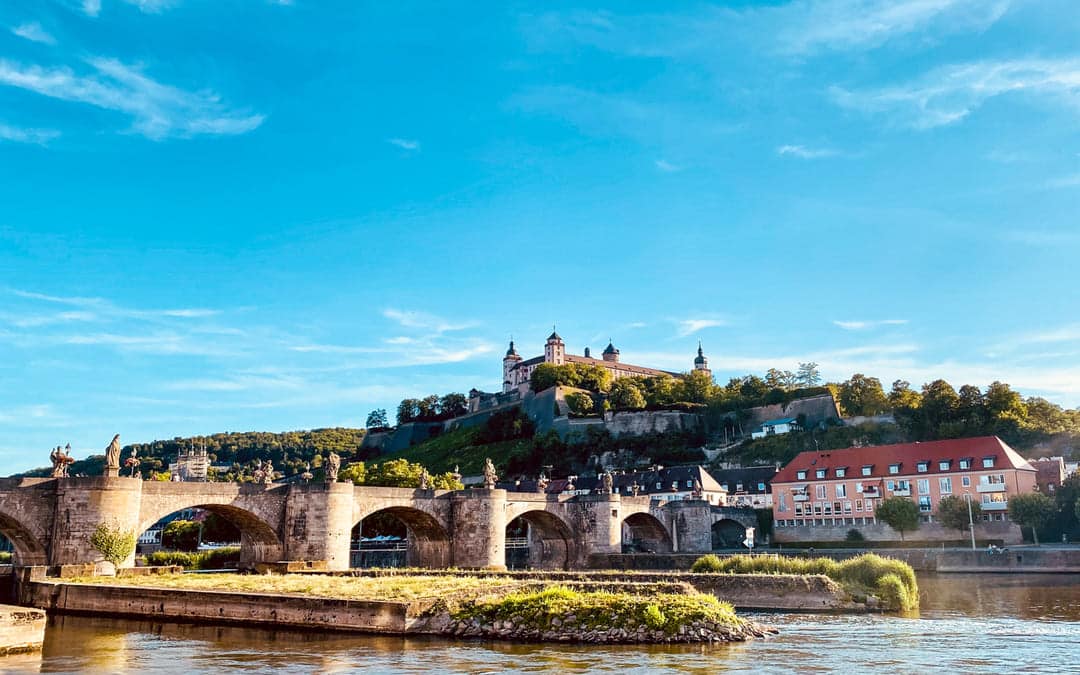
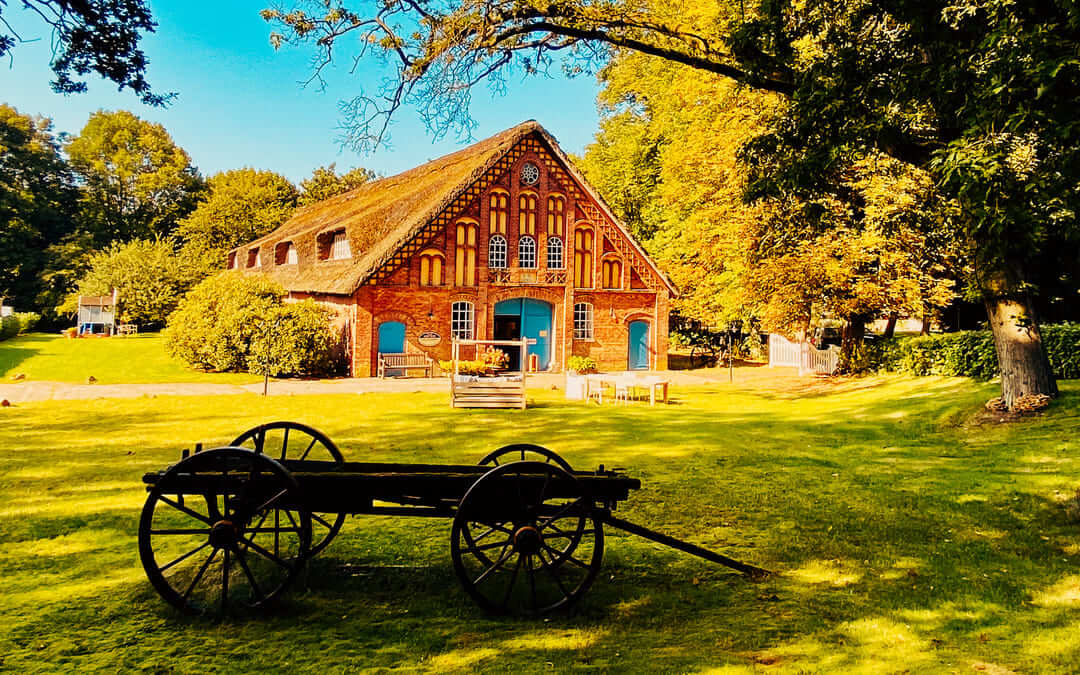

My husband and I are currently traveling through Europe in our caravan. A great opportunity to see the UNESCO World Heritage Sites. Thank you for this compilation!
Dear Sonja,
Thank you very much for your nice comment. Your European tour sounds like a great adventure! I hope my article helps you discover some interesting UNESCO World Heritage Sites in Germany. You don't have to travel far from anywhere in the country to reach one of them 😉. In other countries - such as Italy, Spain and France - it will hardly be any different. There really is an incredible amount to see in Europe. Have fun on your trip!
Love,
Angelika
Dear Angelica,
thank you for your overview! There is still much for me to discover, especially the Hanseatic cities and the Bauhaus I like.
Many love greetings
Anja
Dear Anja,
Thank you for your nice comment. The Bauhaus and the Hanseatic cities are also among my favorites. On my trip in June I was able to get to know Lübeck and Wismar and was thrilled by both! Also for me's still a lot to discover, because of course I have not yet seen all these UNESCO sites, but I'm working on it!😅
Warm regards,
Angelika
Thank you for this carefully and entertainingly compiled overview! Now I have really got the desire to travel.
Love,
Wiebke
Dear Wiebke,
Thank you very much for your nice feedback. I am very happy that you find my overview helpful. I hope it inspires you to check out one or two UNESCO World Heritage Sites and discover new fascinating places in our beautiful country.
Love,
Angelika
What a grandiose compilation of UNESCO World Heritage Sites. Great class! And to my delight I had to realize that I have already seen more than half of them live. Thank you very much for this great post.
Dear Nicole,
Thank you very much for your great comment, about which I am happy "like Bolle"😅. You can imagine that I have put a lot of work into the contribution - the nicer it is to get such a nice feedback. You've already seen more German World Heritage sites than I have, but that may change soon 😃. I'm doing a big tour from the end of May over the Harz Mountains to the Baltic Sea near Lübeck, and there I plan to work off some UNESCO World Heritage Sites. Then also come more photos in the article.
Love,
Angelika